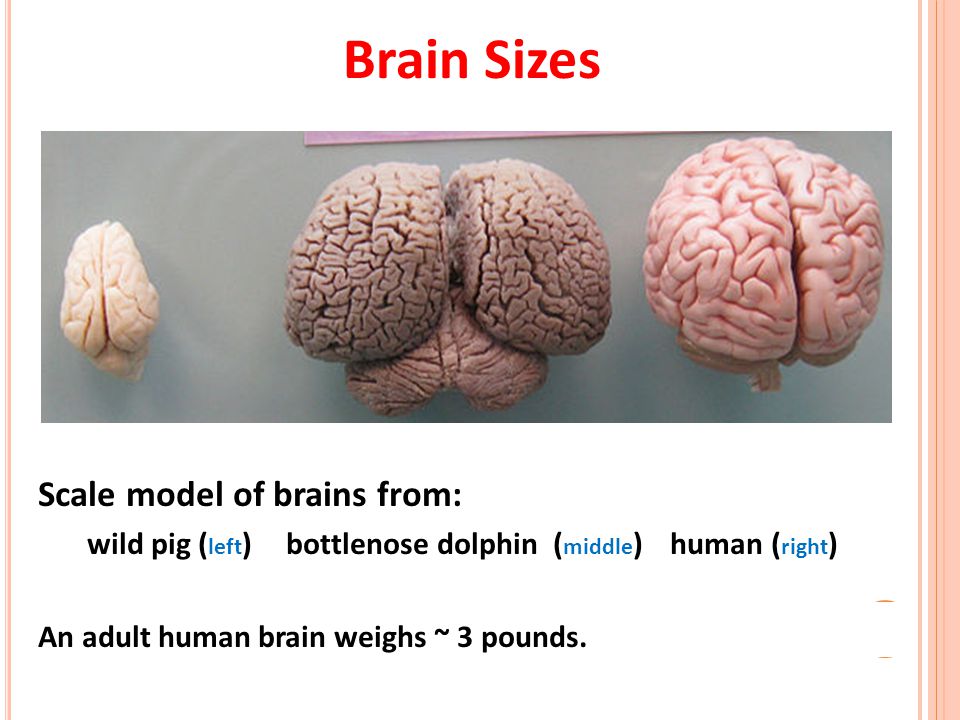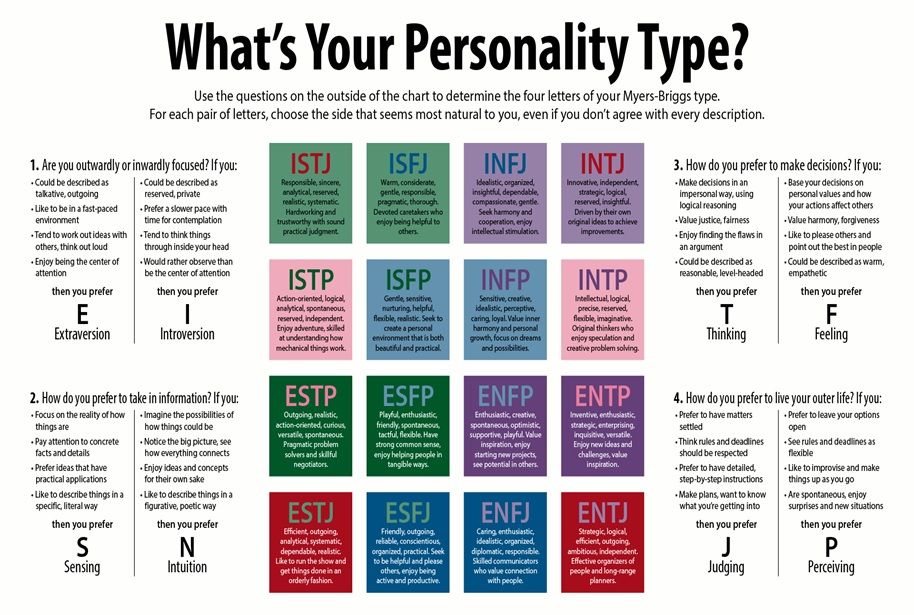Is the human brain a computer
Is the human brain a biological computer?
By Timothy J. Jorgensen
March 14–20, 2022 is Brain Awareness Week—an annual global campaign to generate public support for brain science. Brain Awareness Week was founded by the Dana Alliance for Brain Initiatives (DABI) and the European Dana Alliance for the Brain (EDAB). The goal of this initiative is to foster enthusiasm among people about solving the many mysteries of the human brain. One of these unsolved mysteries is how our brain—the human body’s master electrical organ—actually conducts its electrical business and how it does this job with such remarkable efficiency.
Electrically, the brain remains largely a black box. We send electrical signals in and we get electrical signals out, but what it all exactly means is open to a lot of interpretation and some intense controversy.
But if we just look at the brain’s power consumption, we must conclude that the human brain is very “green.” The adult human brain runs continuously, whether awake or sleeping, on only about 12 watts of power. For comparison, a typical desktop computer draws around 175 watts, and a laptop somewhere around 60 watts. And the brain’s power source is renewable; it’s the solar energy stored in food. If the human brain were a computer, it would be the greenest computer on Earth.
The basis for the brain’s greenness is its ultra-high computational efficiency; that is, it can generate a tremendous amount of computational output for the very little power it draws. Studies have shown the brain has higher computational power efficiency than electronic computers by orders of magnitude. This has led to efforts to attempt to design computer architectures to better emulate the brain. The thought is, if computers’ circuitry were to become more brain-like, the power requirements for computers would go way down, which would translate into practical advantages such as smaller batteries and longer times between charging.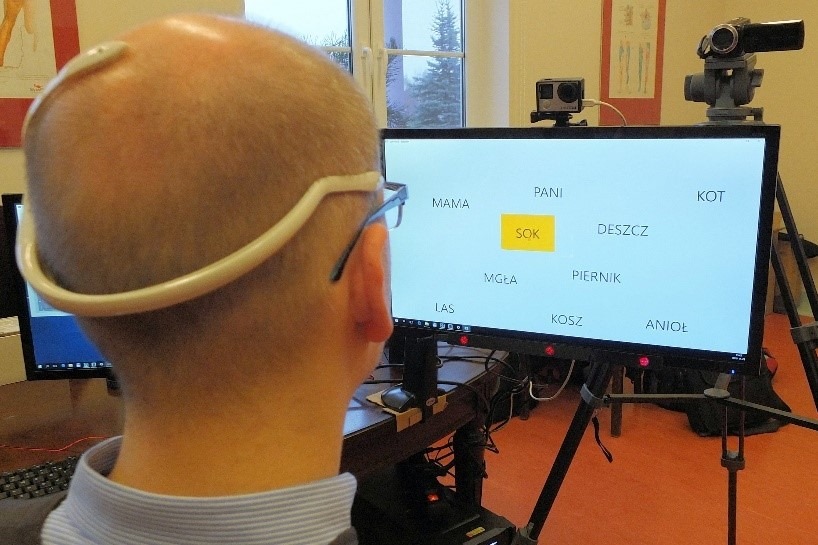
How did the brain’s high computational efficiency come about? As I explain in my book, Spark: The Life of Electricity and the Electricity of Life, some contend it was the result of evolutionary pressures that favored individuals with the highest neurological efficiencies. Some evolutionary biologists have even argued that evolution among higher animals has been largely driven by natural selection for neurological efficiency at the level of the neuron. So, by emulating the nervous systems of higher organisms in our electronic design of computers, we might be exploiting design strategies that have already withstood millions of years of natural vetting. But apart from the practical applications of brain science to computers, attempts to develop computer electronics that emulate the circuitry of the brain may lead to a better understanding of how the brain itself actually works, at its most fundamental level.
Yet, this view of the brain as a super green computer is not without its critics. Some claim there are severe limitations on what we can learn about the brain solely through equating its components to computer components. They say true insight into the electrical nature of the brain can be gained only by studying the brain’s electrical activity as a whole. They assert that reducing the brain to computer status does the brain a great injustice, and ultimately fails to gain true insight, because such an approach cannot see the forest for the trees. They, therefore, advocate for complementary large-scale approaches, saying such approaches are critical to understanding the workings of the brain in its entirety.
Some claim there are severe limitations on what we can learn about the brain solely through equating its components to computer components. They say true insight into the electrical nature of the brain can be gained only by studying the brain’s electrical activity as a whole. They assert that reducing the brain to computer status does the brain a great injustice, and ultimately fails to gain true insight, because such an approach cannot see the forest for the trees. They, therefore, advocate for complementary large-scale approaches, saying such approaches are critical to understanding the workings of the brain in its entirety.
Some brain scientists are even more hostile toward the metaphor of the brain as a computer. They say the metaphor has long outlived its usefulness and it is now holding us back. Holding us back because the brain-as-computer model ignores what are called emergent properties—the properties that emerge as a system functions and that cannot be predicted just from studying its components.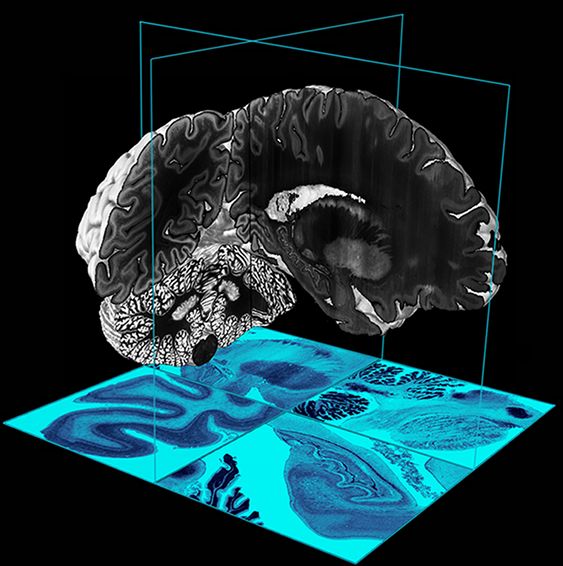 They contend the things we most want to know about brain function, such as the mechanism of consciousness and the nature of sleep, are emergent properties, and thus, inaccessible to us as long as we keep trying to find understanding of the brain in terms of corresponding computer components. This group of neuroscientists generally believes insight into the brain will be obtained through studies of behavior, not by comparison with computers.
They contend the things we most want to know about brain function, such as the mechanism of consciousness and the nature of sleep, are emergent properties, and thus, inaccessible to us as long as we keep trying to find understanding of the brain in terms of corresponding computer components. This group of neuroscientists generally believes insight into the brain will be obtained through studies of behavior, not by comparison with computers.
This criticism of the brain-as-computer model has been around for a long time. As early as 1951, neuroscientist Karl Lashley decried the use of any machine-based metaphor for the brain. Said Lashley:
Descartes was impressed by the hydraulic figures in the royal gardens, and developed a hydraulic theory of the action of the brain. We have since had telephone theories, electrical field theories, and now theories based on computing machines… . We are more likely to find out how the brain works by studying the brain itself, and the phenomenon of behavior, than by indulging in far-fetched physical analogies.
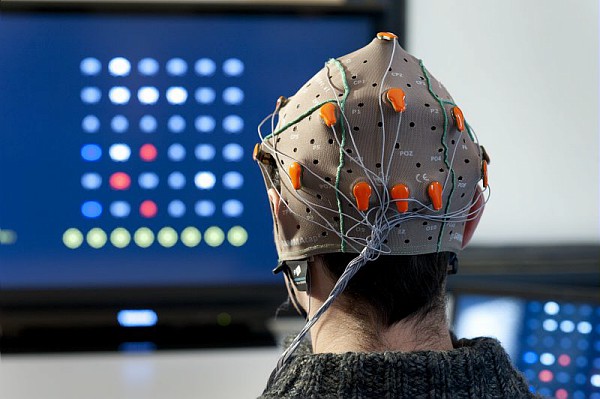
This is a common sentiment among the modern-day haters of the computer metaphor of the brain. In particular, they believe the heavy focus on studying the brain’s interaction with the senses, as the majority of brain studies do, ignores the true marvel of the brain: its control of behavior. It is the processing and translation of sensory information into appropriate behaviors that, they believe, is the key to understanding how the brain actually works. Regrettably, we know little about how the brain controls the body’s behaviors and, they argue, we are never going to get there by studying the details of things like eye-to-brain visual circuitry. According to them, we will never be able to figure out why, when the eyes see flames, the nose smells smoke, and the ears hear an alarm, the legs then get the body out of the building as fast as possible. When we understand that, we will understand how the brain actually works.
No one knows how many annual Brain Awareness Weeks will pass before we ultimately resolve the brain versus computer controversy.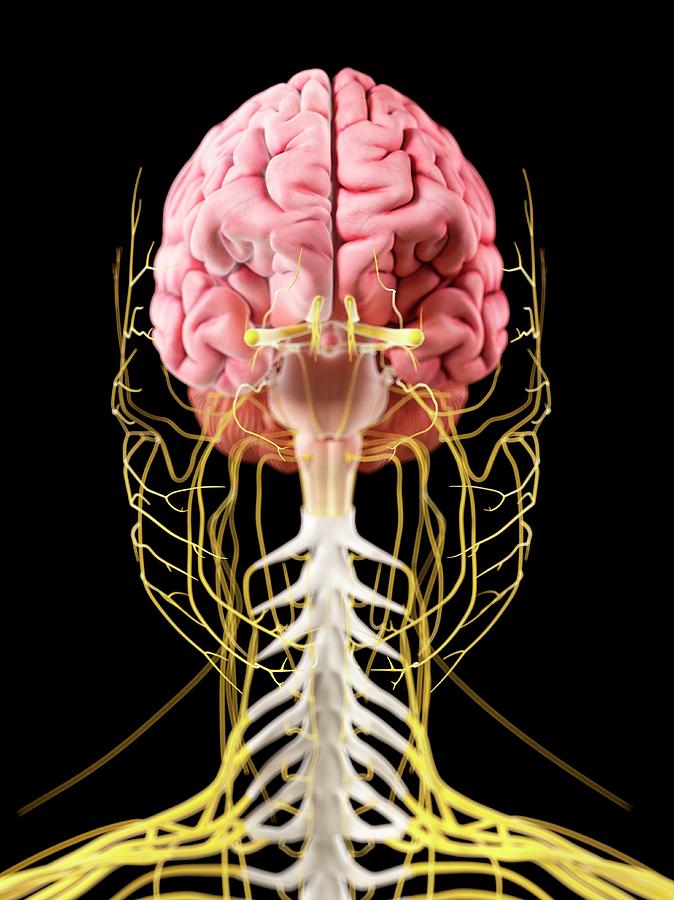 But that doesn’t matter. What matters is that people become aware of many questions that brain science is addressing, and that they become enthused enough about brain research to support and fund it. Hopefully, this research will ultimately lead to cures for the many different brain diseases that cause so much human suffering. The American Brain Foundation estimates that 1 in 6 people worldwide suffer from some brain-related disorder, and there is little hope of relieving people of these illnesses without a better understanding the underlying mechanisms by which a brain actually works. We may not be able to answers all the questions about the brain, but we can certainly become aware of which questions are the most important to ask.
But that doesn’t matter. What matters is that people become aware of many questions that brain science is addressing, and that they become enthused enough about brain research to support and fund it. Hopefully, this research will ultimately lead to cures for the many different brain diseases that cause so much human suffering. The American Brain Foundation estimates that 1 in 6 people worldwide suffer from some brain-related disorder, and there is little hope of relieving people of these illnesses without a better understanding the underlying mechanisms by which a brain actually works. We may not be able to answers all the questions about the brain, but we can certainly become aware of which questions are the most important to ask.
Timothy J. Jorgensen is professor of radiation medicine and director of the Health Physics Graduate Program at Georgetown University. He is the author of the award-winning book Strange Glow: The Story of Radiation (Princeton).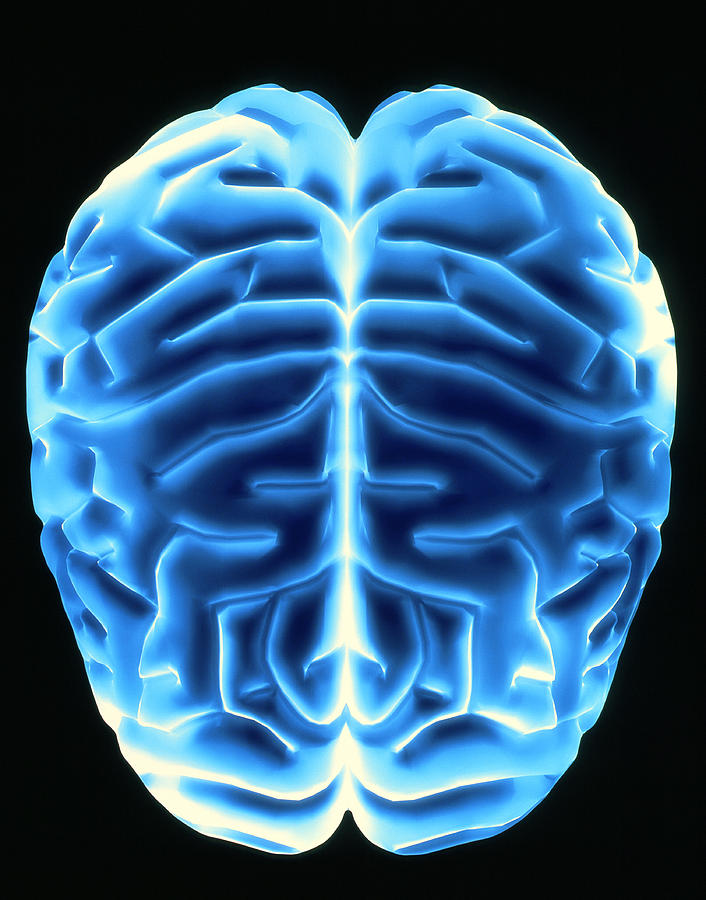 He lives in Rockville, Maryland. Twitter @Tim_Jorgensen
He lives in Rockville, Maryland. Twitter @Tim_Jorgensen
Is your brain a computer?
Computing
We asked experts for their best arguments in the long-standing debate over whether brains and computers process information the same way.
GettyAugust 25, 2021
It’s an analogy that goes back to the dawn of the computer era: ever since we discovered that machines could solve problems by manipulating symbols, we’ve wondered if the brain might work in a similar fashion. Alan Turing, for example, asked what it would take for a machine to “think”; writing in 1950, he predicted that by the year 2000 “one will be able to speak of machines thinking without expecting to be contradicted.” If machines could think like human brains, it was only natural to wonder if brains might work like machines. Of course, no one would mistake the gooey material inside your brain for the CPU inside your laptop—but beyond the superficial differences, it was suggested, there might be important similarities.
Today, all these years later, experts are divided. Although everyone agrees that our biological brains create our conscious minds, they’re split on the question of what role, if any, is played by information processing—the crucial similarity that brains and computers are alleged to share.
While the debate may sound a bit academic, it actually has real-world implications: the effort to build machines with human-like intelligence depends at least in part on understanding how our own brains actually work, and how similar—or not—they are to machines. If brains could be shown to function in a way that was radically different from a computer, it would call into question many traditional approaches to AI.
The question may also shape our sense of who we are. As long as brains, and the minds they enable, are thought of as unique, humankind might imagine itself to be very special indeed. Seeing our brains as nothing more than sophisticated computational machinery could burst that bubble.
We asked the experts to tell us why they think we should—or shouldn’t—think of the brain as being “like a computer.”
AGAINST: The brain can’t be a computer because it’s biological.
Everyone agrees that the actual stuff inside a brain—“designed” over billions of years by evolution—is very different from what engineers at IBM and Google put inside your laptop or smartphone. For starters, brains are analog. The brain’s billions of neurons behave very differently from the digital switches and logic gates in a digital computer. “We’ve known since the 1920s that neurons don’t just turn on and off,” says biologist Matthew Cobb of the University of Manchester in the UK. “As the stimulus increases, the signal increases,” he says. “The way a neuron behaves when it’s stimulated is different from any computer that we’ve ever built.”
Blake Richards, a neuroscientist and computer scientist at McGill University in Montreal, agrees: brains “process everything in parallel, in continuous time” rather than in discrete intervals, he says.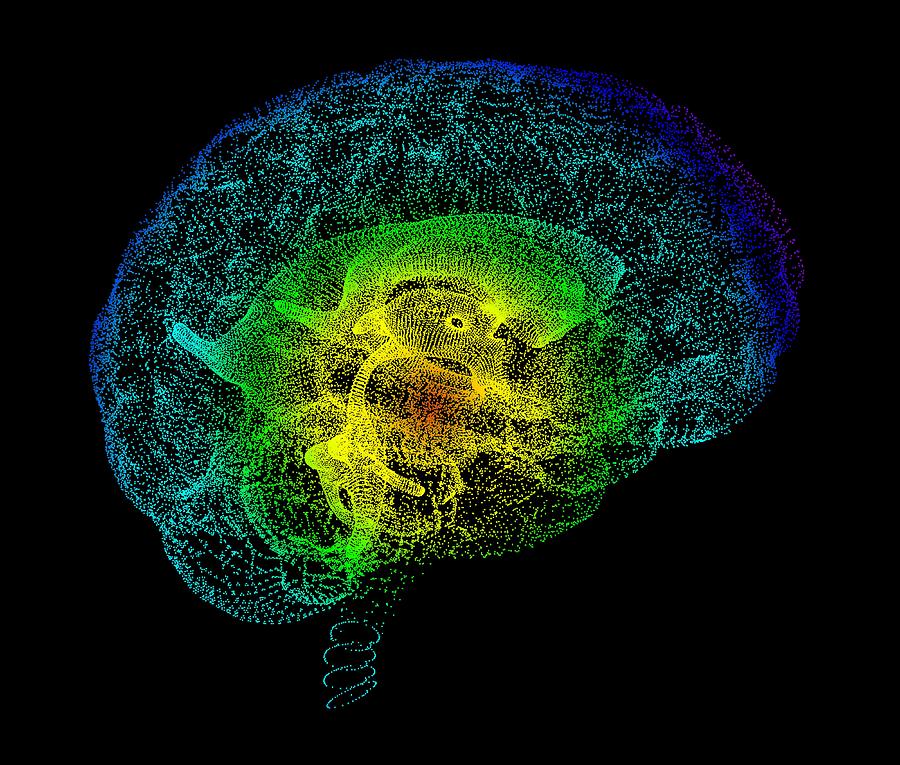 In contrast, today’s digital computers employ a very specific design based on the original von Neumann architecture. They work largely by going step by step through a list of instructions encoded in a memory bank, while accessing information stored in discrete memory slots.
In contrast, today’s digital computers employ a very specific design based on the original von Neumann architecture. They work largely by going step by step through a list of instructions encoded in a memory bank, while accessing information stored in discrete memory slots.
“None of that has any resemblance to what goes on in your brain,” says Richards. (And yet, the brain keeps surprising us: in recent years, some neuroscientists have argued that even individual neurons can perform certain kinds of computations, comparable to what computer scientists call an XOR, or “exclusive or,” function.)
FOR: Sure it can! The actual structure is beside the point.
But perhaps what brains and computers do is fundamentally the same, even if the architecture is different. “What the brain seems to be doing is quite aptly described as information processing,” says Megan Peters, a cognitive scientist at the University of California, Irvine. “The brain takes spikes [brief bursts of activity that last about a tenth of a second] and sound waves and photons and converts it into neural activity—and that neural activity represents information.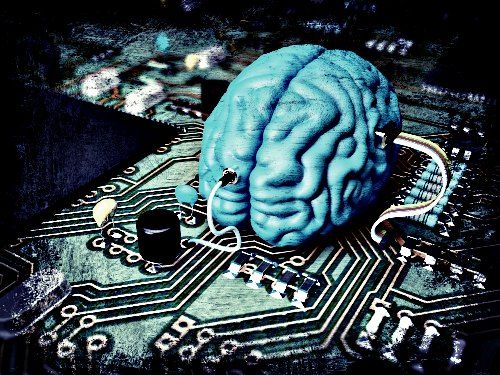 ”
”
Richards, who agrees with Cobb that brains work very differently from today’s digital computers, nonetheless believes the brain is, in fact, a computer. “A computer, according to the usage of the word in computer science, is just any device which is capable of implementing many different computable functions,” says Richards. By that definition, “the brain is not simply like a computer. It is literally a computer.”
Michael Graziano, a neuroscientist at Princeton University, echoes that sentiment. “There’s a more broad concept of what a computer is, as a thing that takes in information and manipulates it and, on that basis, chooses outputs. And a ‘computer’ in this more general conception is what the brain is; that’s what it does.”
But Anthony Chemero, a cognitive scientist and philosopher at the University of Cincinnati, objects. “What seems to have happened is that over time, we’ve watered down the idea of ‘computation’ so that it no longer means anything,” he says. “Yes, your brain does stuff, and it helps you know things—but that’s not really computation anymore.”
“Yes, your brain does stuff, and it helps you know things—but that’s not really computation anymore.”
FOR: Traditional computers might not be brain-like, but artificial neural networks are.
All of the biggest breakthroughs in artificial intelligence today have involved artificial neural networks, which use “layers” of mathematical processing to assess the information they’re fed. The connections between the layers are assigned weights (roughly, a number that corresponds to the importance of each connection relative to the others—think of how a professor might work out a final grade based on a series of quiz results but assign a greater weight to the final quiz). Those weights are adjusted as the network is exposed to more and more data, until the last layer produces an output. In recent years, neural networks have been able to recognize faces, translate languages, and even mimic human-written text in an uncanny way.
“An artificial neural network is actually basically just an algorithmic-level model of a brain,” says Richards.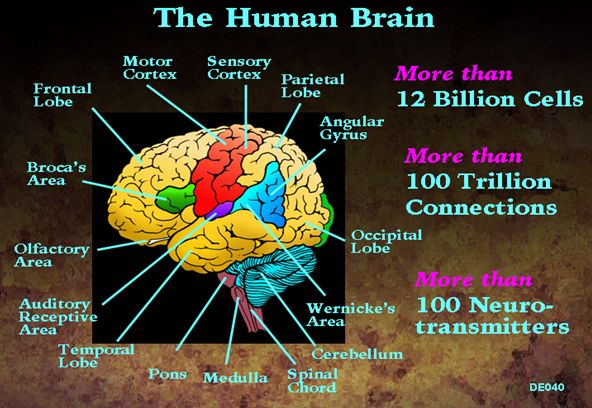 “It is a way of trying to model the brain without reference to the specific biological details of how the brain works.” Richards points out that this was the explicit goal of neural-network pioneers like Frank Rosenblatt, David Rumelhart, and Geoffrey Hinton: “They were specifically interested in trying to understand the algorithms that the brain uses to implement the functions that brains successfully compute.”
“It is a way of trying to model the brain without reference to the specific biological details of how the brain works.” Richards points out that this was the explicit goal of neural-network pioneers like Frank Rosenblatt, David Rumelhart, and Geoffrey Hinton: “They were specifically interested in trying to understand the algorithms that the brain uses to implement the functions that brains successfully compute.”
Scientists have recently developed neural networks whose workings are said to more closely resemble those of actual human brains. One such approach, predictive coding, is based on the premise that the brain is constantly trying to predict what sensory inputs it’s going to receive next; the idea is that “keeping up” with the outside world in this way boosts its chances for survival—something that natural selection would have favored. It’s an idea that resonates with Graziano. “The purpose of having a brain is movement—being able to interact physically with the external world,” he says.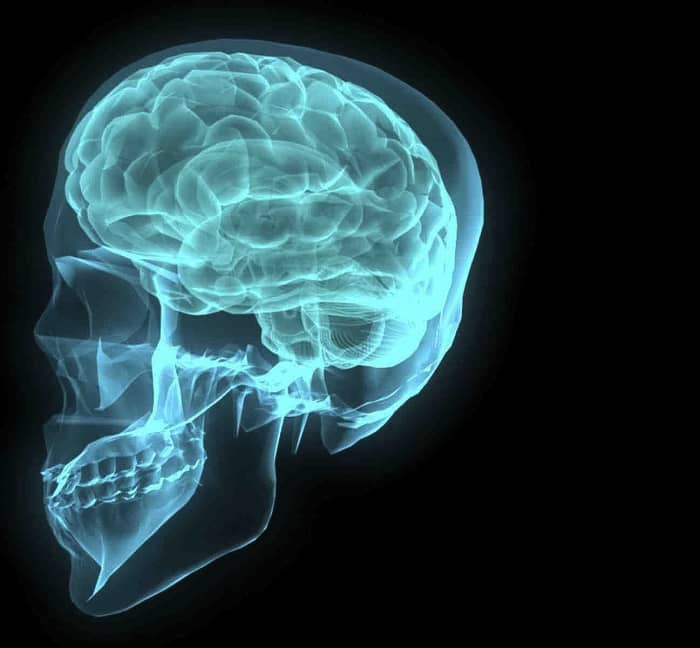 “That’s what the brain does; that’s the heart of why you have a brain. It’s to make predictions.”
“That’s what the brain does; that’s the heart of why you have a brain. It’s to make predictions.”
AGAINST: Even if brains work like neural networks, they’re still not information processors.
Not everyone thinks neural networks support the notion that our brains are like computers. One problem is that they are inscrutable: when a neural network solves a problem, it may not be at all clear how it solved the problem, making it harder to argue that its method was in any way brain-like. “The artificial neural networks that people like Hinton are working on now are so complicated that even if you try to analyze them to figure out what parts were storing information about what, and what counts as the manipulation of that information, you’re not going to be able to pull that out,” says Chemero. “The more complicated they get, the more intractable they become.”
But defenders of the brain-as-computer analogy say that doesn’t matter. “You can’t point to the 1s and 0s,” says Graziano.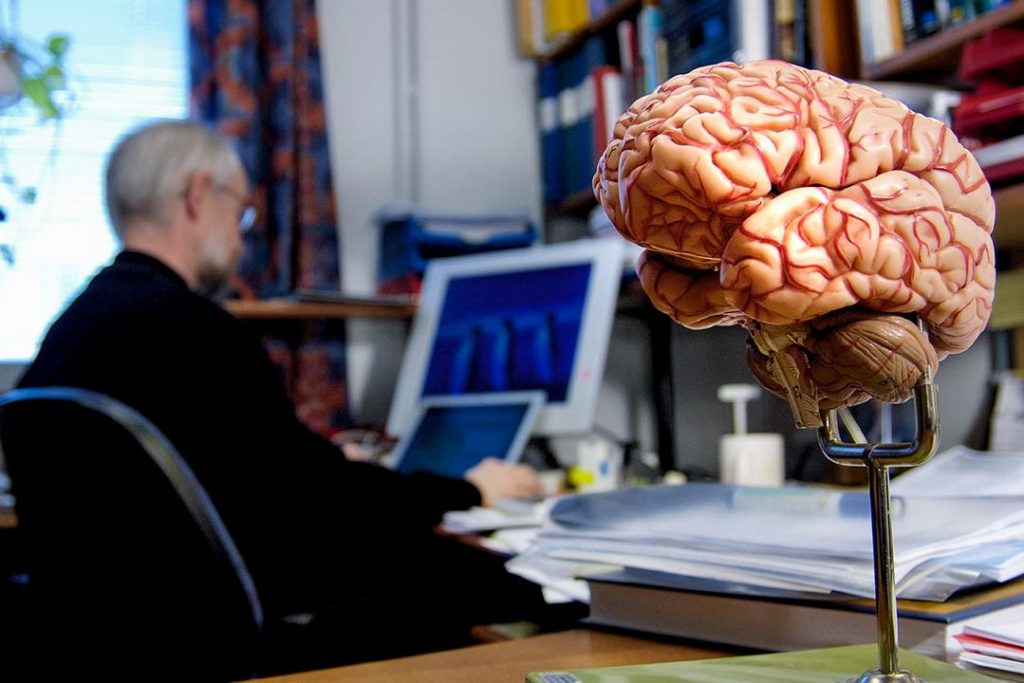 “It’s distributed in a pattern of connectivity that was learned among all those artificial neurons, so it’s hard to ‘talk shop’ about exactly what the information is, where it’s stored, and how it’s encoded—but you know it’s there.”
“It’s distributed in a pattern of connectivity that was learned among all those artificial neurons, so it’s hard to ‘talk shop’ about exactly what the information is, where it’s stored, and how it’s encoded—but you know it’s there.”
FOR: The brain has to be a computer; the alternative is magic.
If you’re committed to the idea that the physical brain creates the mind, then computation is the only viable path, says Richards. “Computation just means physics,” he says. “The only other option is that you’re proposing some kind of magical ‘soul’ or ‘spirit’ or something like that ... There’s literally only two options: either you’re running an algorithm or you’re using magic.”
AGAINST: The brain-as-computer metaphor can’t explain how we derive meaning.
No matter how sophisticated a neural network may be, the information that flows through it doesn’t actually mean anything, says Romain Brette, a theoretical neuroscientist at the Vision Institute in Paris.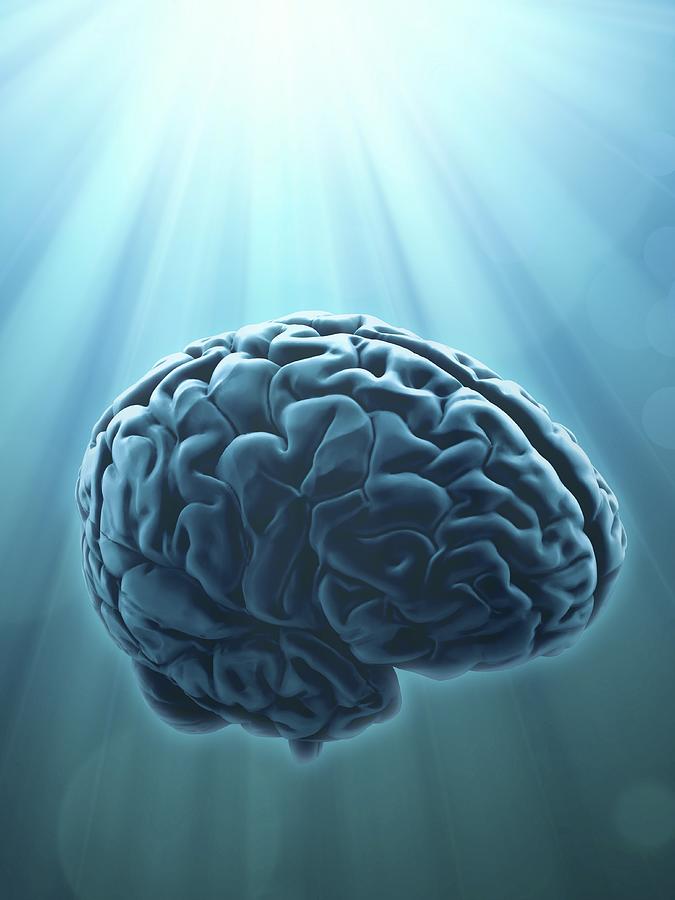 A facial-recognition program, for example, might peg a particular face as being mine or yours—but ultimately it’s just tracking correlations between two sets of numbers. “You still need someone to make sense of it, to think, to perceive,” he says.
A facial-recognition program, for example, might peg a particular face as being mine or yours—but ultimately it’s just tracking correlations between two sets of numbers. “You still need someone to make sense of it, to think, to perceive,” he says.
Which doesn’t mean that the brain doesn’t process information—perhaps it does. “Computation is probably very important in the explanation of the mind and intelligence and consciousness,” says Lisa Miracchi, a philosopher at the University of Pennsylvania. Still, she emphasizes that what the brain does and what the mind does are not necessarily the same. And even if the brain is computer-like, the mind may not be: “Mental processes are not computational processes, because they’re inherently meaningful, whereas computational processes are not.”
So where does that leave us? The question of whether the brain is or is not like a computer appears to depend partly on what we mean by “computer.” But even if the experts could agree on a definition, the question seems unlikely to be resolved anytime soon—perhaps because it is so closely tied to thorny philosophical problems, like the so-called mind-body problem and the puzzle of consciousness.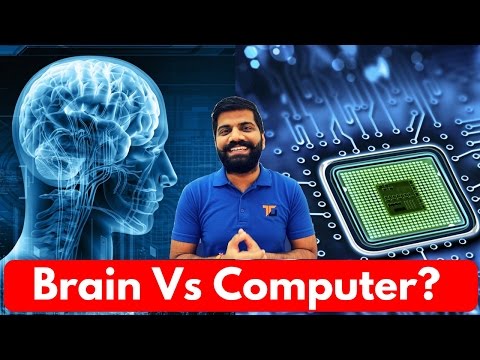 We argue about whether the brain is like a computer because we want to know how minds came to be; we want to understand what allows some arrangements of matter, but not others, not only to exist but to experience.
We argue about whether the brain is like a computer because we want to know how minds came to be; we want to understand what allows some arrangements of matter, but not others, not only to exist but to experience.
Dan Falk is a science journalist based in Toronto. His books include The Science of Shakespeare and In Search of Time.
by Dan Falk
The Mind issue
This story was part of our September/October 2021 issue.
Explore the issueDeep Dive
Computing
Stay connected
Illustration by Rose Wong
Discover special offers, top stories, upcoming events, and more.
Enter your email
Privacy PolicyThank you for submitting your email!
Explore more newsletters
It looks like something went wrong.
We’re having trouble saving your preferences. Try refreshing this page and updating them one more time.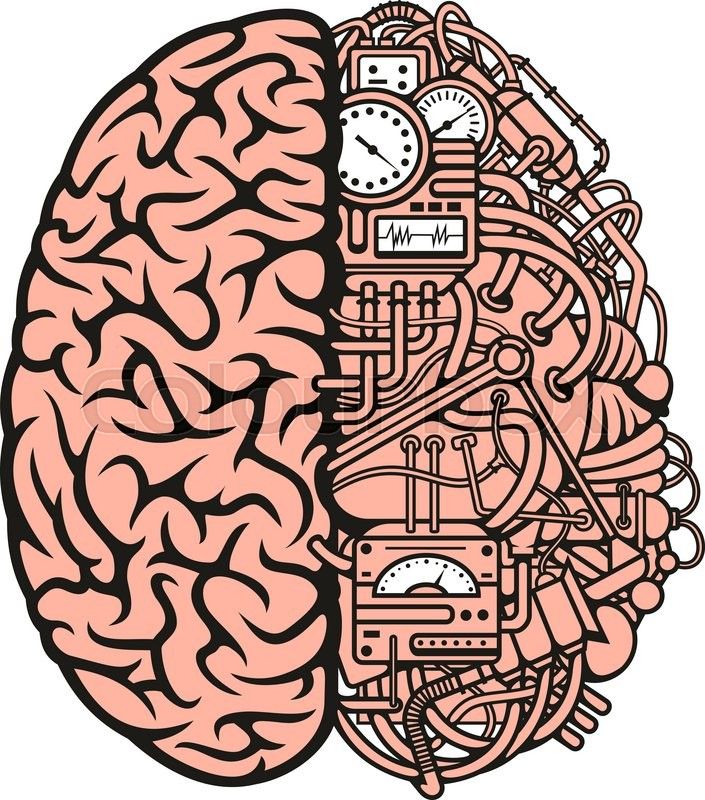 If you continue to get this message, reach out to us at [email protected] with a list of newsletters you’d like to receive.
If you continue to get this message, reach out to us at [email protected] with a list of newsletters you’d like to receive.
Brain-Computer Interface, Reality and Fantasies
Echo of Moscow on air Mikhail Lebedev, Professor of the Center for Neurobiology and Neurorehabilitation of Skoltech, Scientific Director of the Center for Bioelectrical Interfaces, Institute of Cognitive Neurosciences, National Research University Higher School of Economics
Dear M.A. listeners and viewers! In today's issue of the "Conversations for Life" series, we will talk about the brain-computer interface. About how to connect to the brain, what is real, what is still fiction, if any. I would like to welcome Mikhail Lebedev, neurophysiologist, professor at the Skoltech Center for Neurobiology and Neurorehabilitation, scientific director of the Center for Bioelectrical Interfaces at the Institute of Cognitive Neurosciences at the National Research University Higher School of Economics, to our studio.
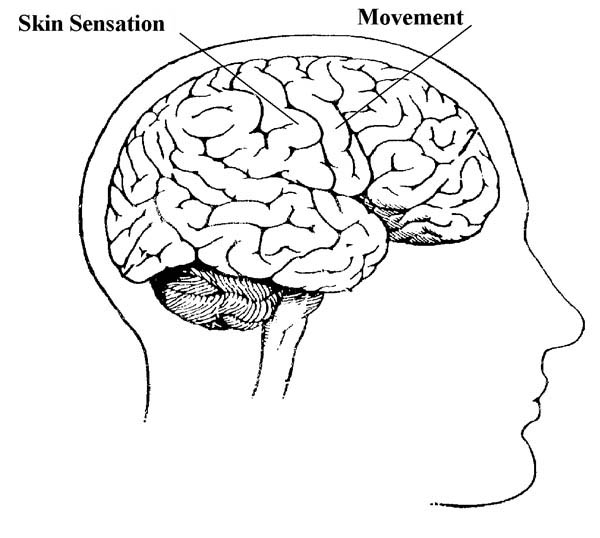 Hello, Mikhail Albertovich.
Hello, Mikhail Albertovich.
M. Lebedev – Hello, thank you for the invitation.
M. Astvatsaturyan – Before we start talking very seriously, I want to ask a question that arose from fairly common, but in fact, replicated ideas, and the question is this: is the brain a computer or not?
M. Lebedev – The brain is…
M. Astvatsaturyan – The human brain.
M. Lebedev – The human brain is a computer. But here it should be taken into account that all our ideas about the brain - they are always compared with our current technological development. That is, when some electronic circuits first appeared, they were popular feedback circuits, and then they said: “The brain is a feedback system.” When computers appeared, they began to say: "The brain is a computer." Now artificial neural networks are being developed, it has become more fashionable to say that "The brain is a neural network.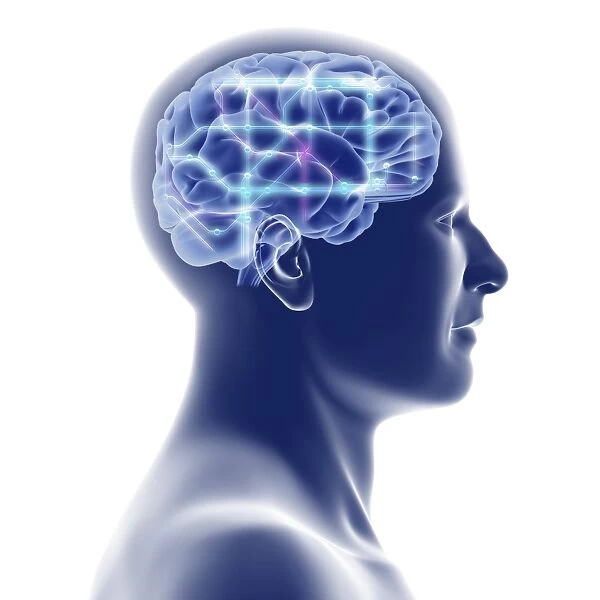 " So, in principle, yes, the brain is a computer in the sense that it has elements, they are interconnected, you can see how they work, we still do not fully know how this happens. But, of course, the work of the brain is built approximately like certain electronic circuits, or a computer.
" So, in principle, yes, the brain is a computer in the sense that it has elements, they are interconnected, you can see how they work, we still do not fully know how this happens. But, of course, the work of the brain is built approximately like certain electronic circuits, or a computer.
M. Astvatsaturyan – But a computer is not a neural network. That is, the equal sign is so conditional after all.
M. Lebedev – Well, of course, if we compare it literally, then the brain is very different from a computer, from the computers that we use, and in the way of encoding information, in the way of processing information. But, on the other hand, there is no such law for computers that they should be the way they are now. Neuromorphic computers are being created that replicate how the brain works.
M. Astvatsaturyan – When did the concept of “brain-computer interface” arise, what is behind these words, what is it?
M. Lebedev – Well, generally speaking, science fiction writers have been thinking about connecting the brain to a computer or some external device for a long time.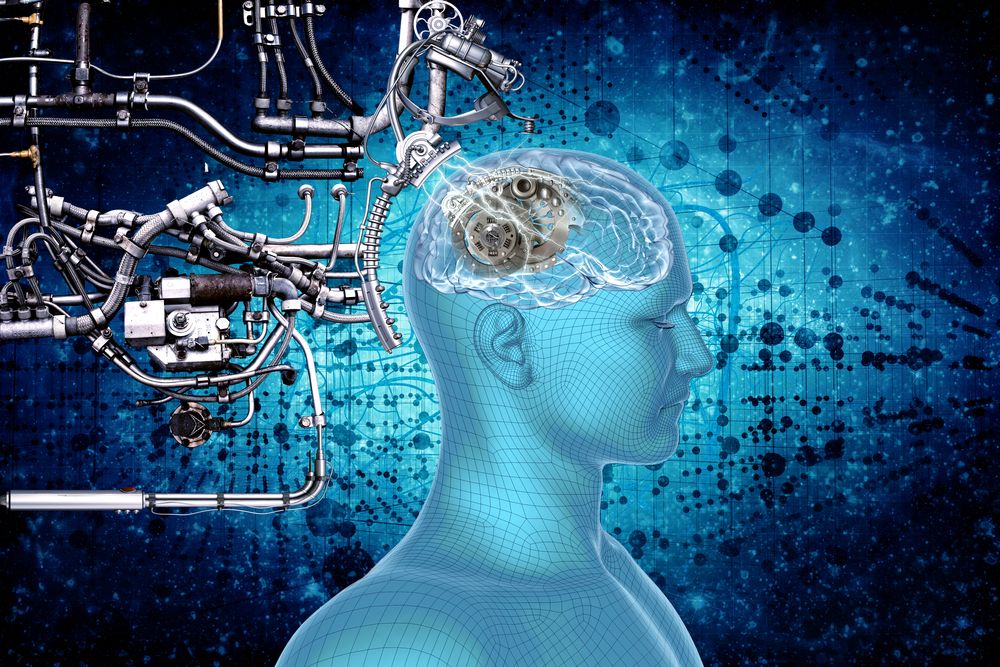 We all know this topic, parapsychology, right? When the power of thought can move some objects. So ideas like that were in the air. But perhaps the very first demonstration of a brain-computer interface occurred in 1963, when Gray Walter demonstrated that he could connect his patients' brains to electrodes in the motor cortex with a device such as a slide projector. He asked them to press a button and switch slides. At the same time, such a ready potential developed in the brain - and it was strong enough - that Gray Walter was able to turn off the button and connect the ready potential to the slide projector, and the subjects switched these slides.
We all know this topic, parapsychology, right? When the power of thought can move some objects. So ideas like that were in the air. But perhaps the very first demonstration of a brain-computer interface occurred in 1963, when Gray Walter demonstrated that he could connect his patients' brains to electrodes in the motor cortex with a device such as a slide projector. He asked them to press a button and switch slides. At the same time, such a ready potential developed in the brain - and it was strong enough - that Gray Walter was able to turn off the button and connect the ready potential to the slide projector, and the subjects switched these slides.
M. Astvatsaturyan – No button.
M. Lebedev – No button, yes. Moreover, according to eyewitnesses, because it was not published like a solid scientific article. The subjects were surprised how this device guessed their desire to press the button before they pressed the button.
M. Astvatsaturyan – We’ll talk about this lead, but a little later.
M. Lebedev – Well, yes, yes.
M. Astvatsaturyan – First, I want to explain the basic things, the concepts, that is, for you to explain. How is brain activity recorded? Are there algorithms for decoding signals from the brain, what does this allow us to find out? Here is a bunch of questions around what exactly allows you to find out the decoding of information obtained through the implantation of electrodes in the brain. It is obvious that brain activity is recorded using electrodes, right? For now, at this stage.
M. Lebedev – Yes, yes, yes.
M. Astvatsaturyan – Here you are, here you are.
M. Lebedev – Well, it should be understood here that the brain is not created for the convenience of researchers, so that they can fix potentials. Let's say here are modern deep learning methods, they can recognize patterns. If they are shown a picture, they will recognize what is in the picture. But why? Because there is obviously something in the picture that can be recognized.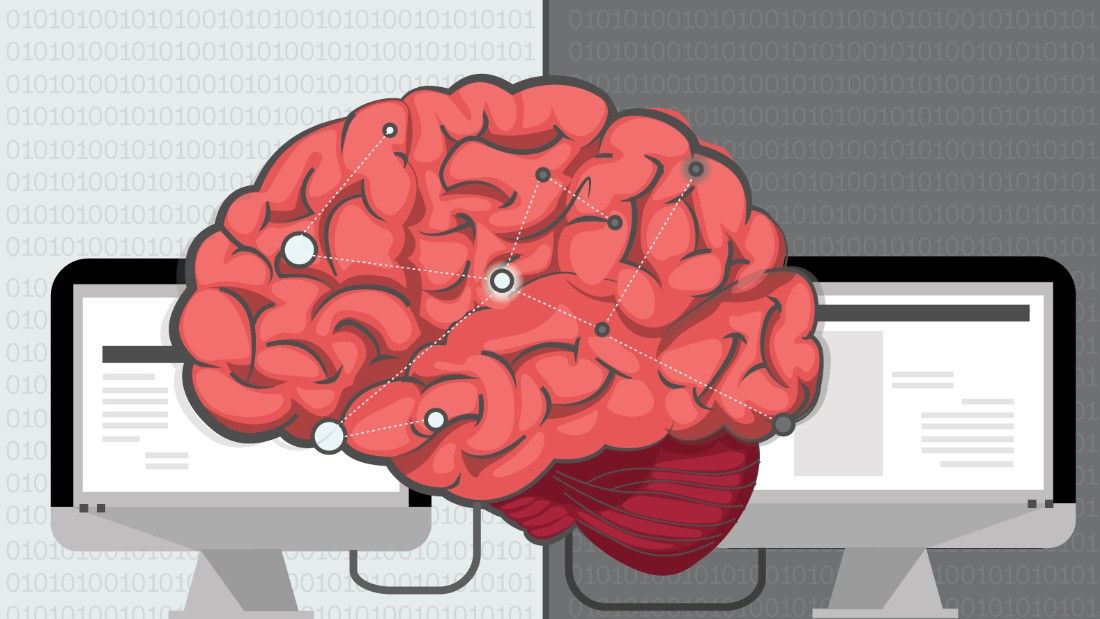 With the brain, the story is somewhat different, since there are certain elements there, they work, they use both the electrical method of signal transmission and the chemical one. And at the same time, we can somehow try to connect, but this is not such a connection as to a cable that carries convenient information for us. What is being done? It's literally inserting an electrode that's bigger than a neuron, right? That is, some kind of thin electronic network of neurons, and suddenly such a nail is inserted, and it tries to record. That is, if we imagine that, for example, we study a computer in this way, it will be very, very strange that we can do anything at all. With the brain, this happens because the brain is kind to the researchers. Let's say if I move my finger, and each time some certain neurons fire, I can say, yes, these firings of neurons are connected with firings of the fingers. Then, by recording the activity of those neurons, I can decode the movements of my fingers. The neurons fired, which means the finger is flexing, or I'm thinking about flexing my finger.
With the brain, the story is somewhat different, since there are certain elements there, they work, they use both the electrical method of signal transmission and the chemical one. And at the same time, we can somehow try to connect, but this is not such a connection as to a cable that carries convenient information for us. What is being done? It's literally inserting an electrode that's bigger than a neuron, right? That is, some kind of thin electronic network of neurons, and suddenly such a nail is inserted, and it tries to record. That is, if we imagine that, for example, we study a computer in this way, it will be very, very strange that we can do anything at all. With the brain, this happens because the brain is kind to the researchers. Let's say if I move my finger, and each time some certain neurons fire, I can say, yes, these firings of neurons are connected with firings of the fingers. Then, by recording the activity of those neurons, I can decode the movements of my fingers. The neurons fired, which means the finger is flexing, or I'm thinking about flexing my finger.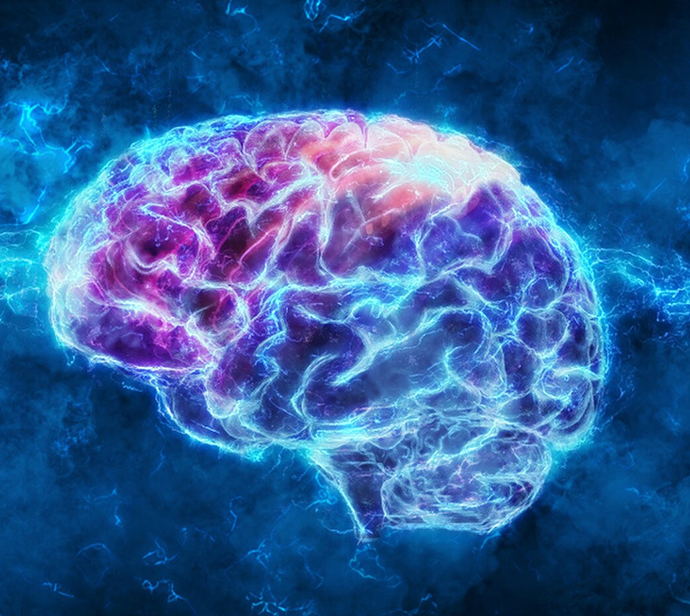 Well, then I mentioned the electrode, you can record the electrical activity of neurons, neurons discharge with such beautiful impulses, everyone who recorded saw that it was very beautiful. In addition, non-invasive methods can be used, for example, putting electrodes on the head, no need to drill holes in the head, and they will record such more global potentials that are obtained in the form of rhythms. There's alpha rhythm, beta rhythm, gamma, and so on. They represent the activity of a huge number of neurons, synchronous activity, so this method is somewhat different from recording the direct discharges of neurons. In addition, you can still study the blood flow of the brain, say, some area of the brain is working - there is increased blood flow, and so on and so forth.
Well, then I mentioned the electrode, you can record the electrical activity of neurons, neurons discharge with such beautiful impulses, everyone who recorded saw that it was very beautiful. In addition, non-invasive methods can be used, for example, putting electrodes on the head, no need to drill holes in the head, and they will record such more global potentials that are obtained in the form of rhythms. There's alpha rhythm, beta rhythm, gamma, and so on. They represent the activity of a huge number of neurons, synchronous activity, so this method is somewhat different from recording the direct discharges of neurons. In addition, you can still study the blood flow of the brain, say, some area of the brain is working - there is increased blood flow, and so on and so forth.
M. Astvatsaturyan – Linguists, you know, they even see changes in brain activity when nouns are declensed on MRI: the instrumental case has its own brain activity, the prepositional case has its own, people receive grants for studying this.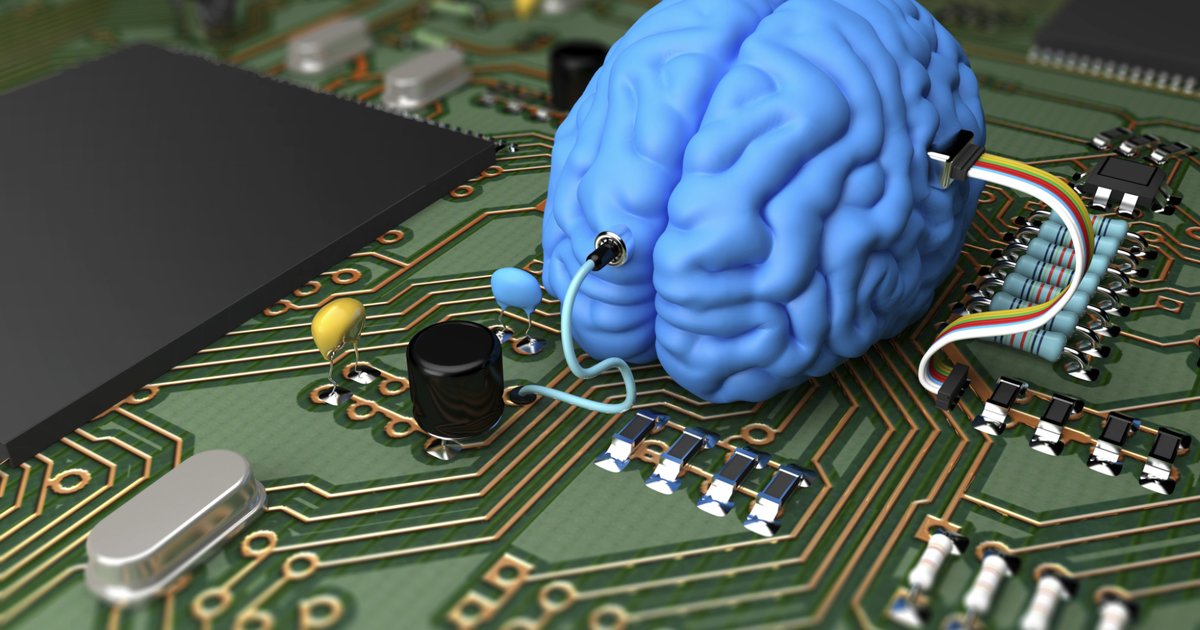
M. Lebedev – Yes, MRI is a very powerful method, it is especially good because its spatial resolution allows you to look deep inside the brain, where you simply cannot look with some surface electrodes.
M. Astvatsaturyan – You won’t look, yes. Well, then what does this information give, how to decipher it?
M. Lebedev – So, then there is a very big problem of deciphering this information, because, as I said, it is not intended for our convenience so that we can decipher it, and now scientists are trying to decipher it without knowing the code.
M. Astvatsaturyan – Still not even a hint?
M. Lebedev – This is still not known. All methods are based on correlations, that is, let's say a neuron has increased activity, if I do something, it means that the neuron is probably somehow involved in this process.
M. Astvatsaturyan – And the reliability should be statistical, should it be many, many times, the same thing?
M. Lebedev – Yes, yes, yes. Either many, many times, or you can record many, many neurons, which also enhances the reliability of statistics. And by the way, in neural interfaces they try to record as many channels as possible, and thus the decoding accuracy improves.
Lebedev – Yes, yes, yes. Either many, many times, or you can record many, many neurons, which also enhances the reliability of statistics. And by the way, in neural interfaces they try to record as many channels as possible, and thus the decoding accuracy improves.
M. Astvatsaturyan – Decoding accuracy, which is actually not decoding yet, but rather an approximation to decoding.
M. Lebedev – Yes, this is a kind of correlation method, and we always remember that correlation does not mean causation. That is, it must always be remembered.
M. Astvatsaturyan – Yes, yes, you need to keep this in mind. For now, for today.
M. Lebedev – Yes, yes, yes.
M. Astvatsaturyan – Maybe in 50 years we would be talking about something else.
M. Lebedev – Quite possibly, yes, neurosciences are developing rapidly, so we are learning more and more.
M. Astvatsaturyan – In general, this is now such a front, the vanguard of biological research, one of.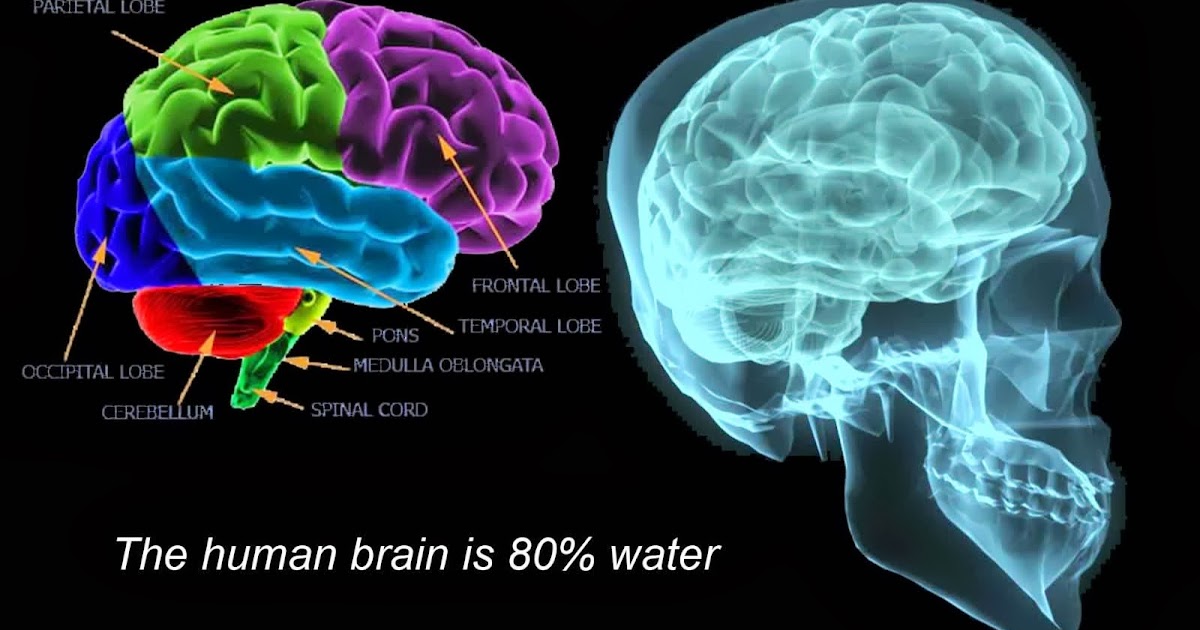
M. Lebedev – And it’s clear why. Because the brain is somehow connected with our consciousness, so to speak, with our soul, so even those who…
M. Astvatsaturyan – Oh, yes. I really want to talk about this in the second part, yes.
M. Lebedev – Good, good.
M. Astvatsaturyan – While talking about technology, the synonym for the “brain-computer” interface, at least in popular science literature, is the expression “connect to the brain”, its authorship is attributed to Elon Musk. And his current high-profile projects, I mean the neurotechnology company Neuralink, are genetically linked to your work, that is, this is a part of your American history, which we will touch on separately, please tell us about this part, about this connection of yours. That is, employees of Musk, his current company Neuralink, they are employees of your former laboratory, right?
M. Lebedev – Yes, yes, yes, I worked with some of them, although two of them no longer work with Musk due to some personal considerations.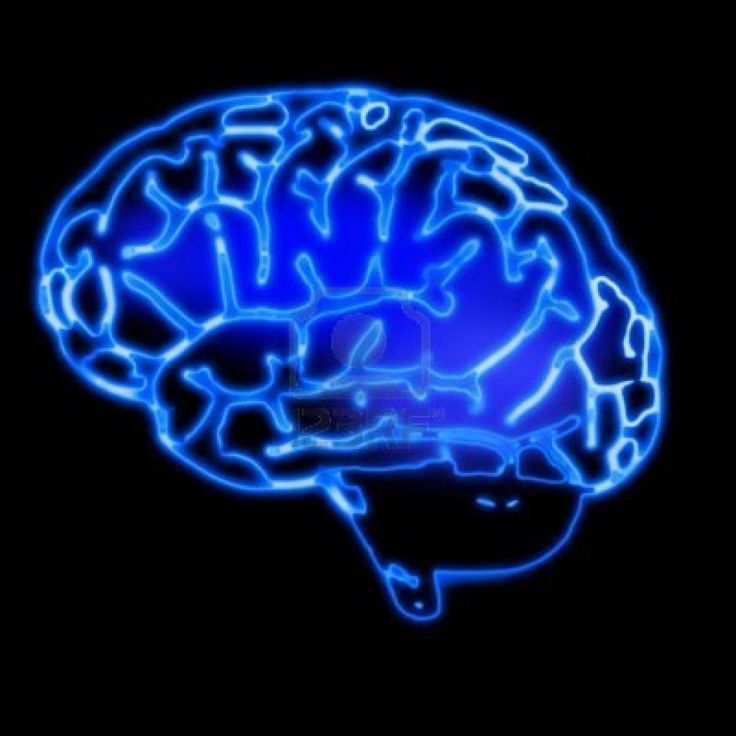
M. Astvatsaturyan – What is he really going to do? He wants to produce brain-computer interfaces?
M. Lebedev – Yes, yes, yes.
M. Astvatsaturyan – So it’s easy to produce and sell, as I understand it, right?
M. Lebedev – There are two main points here. On the one hand, Musk is repeating what we already did 10 years ago, he is simply repeating. On the other hand, he repeats this with much better technology. That is, in a short time, by investing capital and attracting engineers, he has ensured that these interfaces really become practical: small, fully implanted, communicate with the outside world by wireless communication. Recently he showed a monkey, you can't even see that this monkey is implanted, that is, this is a significant achievement. What is Musk going to do?
M. Astvatsaturyan Yes.
M. Lebedev – It seems to me that he himself has a very poor idea.
M. Astvatsaturyan – It’s just fashionable, and he wanted to get into the trend, as they say.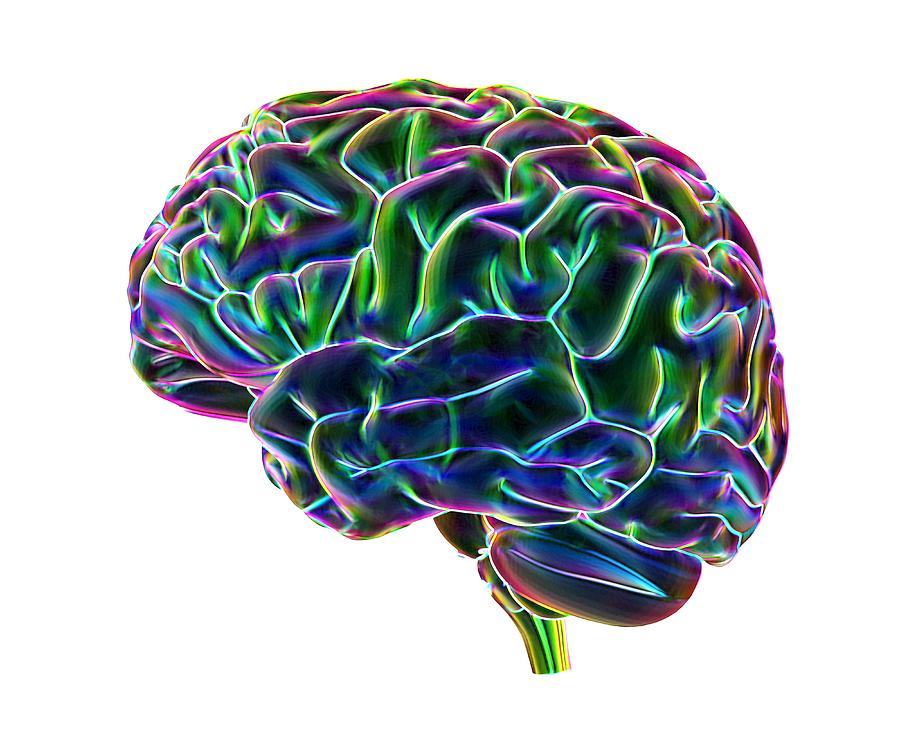
M. Lebedev – Apparently so, but I… I don’t know Musk personally, so I don’t know.
M. Astvatsaturyan – So you didn’t read his thoughts, right? (laughter)
M. Lebedev – Only indirectly, by correlation things (laughter)…
M. Astvatsaturyan – Only a monkey, yes.
M. Lebedev – Apparently, he really feels that there is a great potential for development here. Moreover, in one of his speeches he was asked, what about the technologies of the future? And he didn’t say space, he didn’t say some electric machines, but he said: “Here is the brain, yes, and here it really is the future, yes!”
M. Astvatsaturyan – Is there anything known about some fundamentally new things that will be in this chip of his, which others do not have?
M. Lebedev – There are no fundamentally new things there, at least for now, but everything is done very competently…
M. Astvatsaturyan – Maybe not constructively, but kind of ideologically?
M.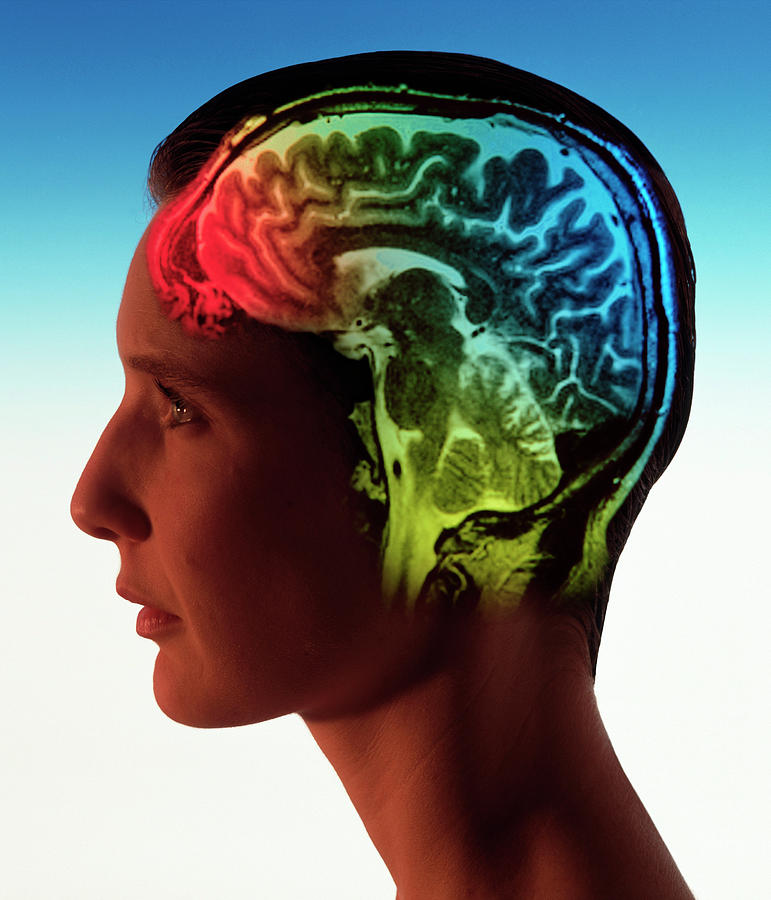 Lebedev – No, ideologically, this is our old ideology, which consists in the fact that if you insert as many electrodes as possible into the brain that will record the activity of individual neurons, then through this method you can achieve good decoding, as it were, of everything, anything, any thoughts, and then because we have such access to brain activity, we can control neuroprostheses, we can heal people, we can even improve the brain we have.
Lebedev – No, ideologically, this is our old ideology, which consists in the fact that if you insert as many electrodes as possible into the brain that will record the activity of individual neurons, then through this method you can achieve good decoding, as it were, of everything, anything, any thoughts, and then because we have such access to brain activity, we can control neuroprostheses, we can heal people, we can even improve the brain we have.
M. Astvatsaturyan – I heard or read something new in signal processing, something was so unusual in this chip.
M. Lebedev – There is a problem with the chip, it is that you need to decide how much processing to give to the chip itself, and how much to delegate to some external devices. Because if the chip simply records the activity of neurons and transmits it in such a raw form to the outside, then this is a large expenditure of energy, large requirements for the communication channel, and this does not work. Therefore, the chip must do something on its own, and in the case of Elon Musk, it does such a spike sorting (spike sorting), that is, it looks at the discharges of neurons, and says: this neuron here is discharged, and instead of record the whole form of this discharge, it records the time and which neuron. And this information is sent out. And then decoding algorithms that are outside the brain already come into play, some external computer does this. But Elon Musk is not unique here.
Therefore, the chip must do something on its own, and in the case of Elon Musk, it does such a spike sorting (spike sorting), that is, it looks at the discharges of neurons, and says: this neuron here is discharged, and instead of record the whole form of this discharge, it records the time and which neuron. And this information is sent out. And then decoding algorithms that are outside the brain already come into play, some external computer does this. But Elon Musk is not unique here.
M. Astvatsaturyan – So there is nothing particularly breakthrough there?
M. Lebedev – There is nothing particularly breakthrough here, but the region itself is breakthrough, because there is still a lot of work to be done.
M. Astvatsaturyan – Is this actually a startup for Musk?
M. Lebedev – Well, a startup, yes, yes, a startup in the sense that the company does not generate income, and it is not known when they will be.
That's about the interfaces, to finish with the technical part, they are invasive in the main.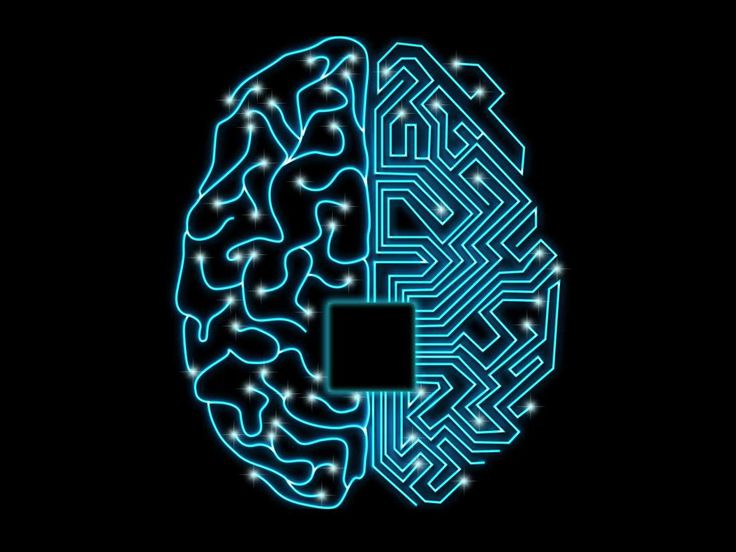
M. Astvatsaturyan – That is, they must be immersed in the brain tissue.
M. Lebedev – In different ways.
M. Astvatsaturyan – Tell us.
M. Lebedev – There are invasive ones when electrodes are placed in the brain. But there are biocompatibility issues here. That is, the brain is not a fool, so to speak, it sees that an electrode has been inserted into it, it tries to protect itself from this electrode. What's happening? First, due to the glial cells that surround this electrode and, as it were, glue it, and then everything can become overgrown with such a dense connective tissue, after which ...
M. Astvatsaturyan – Like a scar, right?
M. Lebedev – Yes, yes, yes, after which the quality of the recording will deteriorate. By the way, if you use this electrode for brain stimulation, then even if it is encapsulated, it will still be good.
M. Astvatsaturyan – How long will it be good for?
M.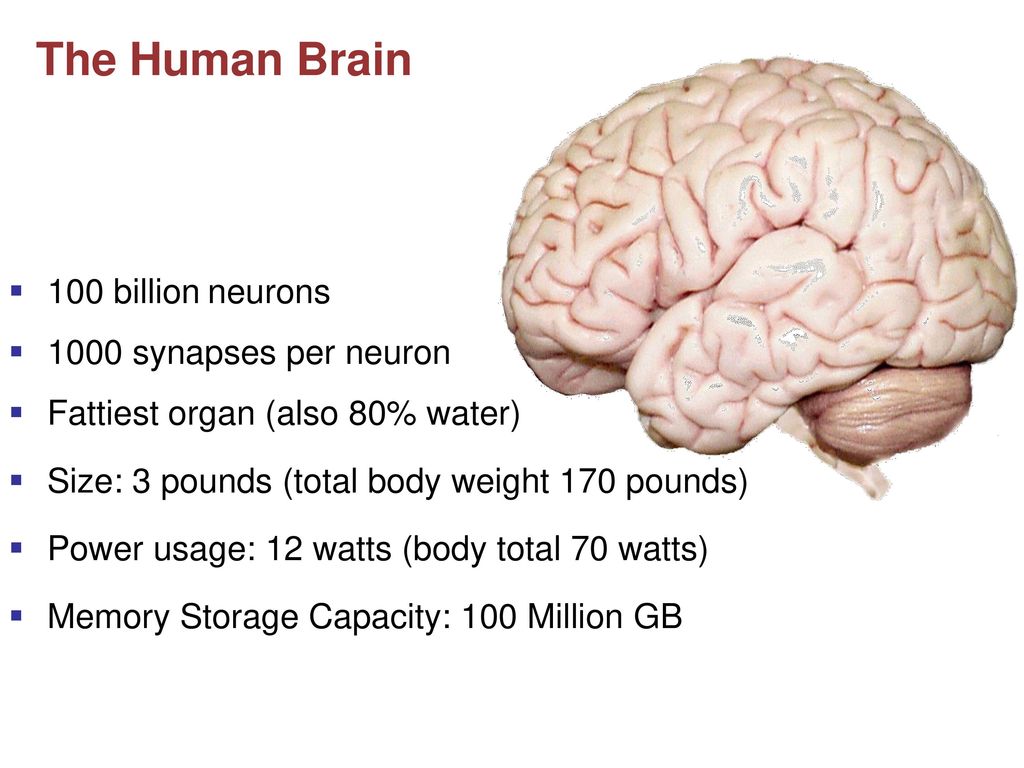 Lebedev – For the record, here, as it were, it could turn out this way and that. It can work for 2 weeks and then stop working, or it can work for many years.
Lebedev – For the record, here, as it were, it could turn out this way and that. It can work for 2 weeks and then stop working, or it can work for many years.
M. Astvatsaturyan – Even years!
M. Lebedev – We recorded on monkeys, there were some monkeys for 8 years with these electrodes, the recording was quite acceptable.
M. Astvatsaturyan – And what are non-invasive interfaces?
M. Lebedev – Non-invasive means that we do not penetrate inside the body.
M. Astvatsaturyan – Yes, what are you doing then?
M. Lebedev – The most popular method is to put electrodes on the scalp, on the head, and record electrical activity. The brain is a source of electromagnetic waves, and it is possible to record them completely. Probably, this has been happening for more than 100 years, such a record, and it is quite informative, and for many purposes it is quite acceptable, for example, for the purposes of rehabilitation.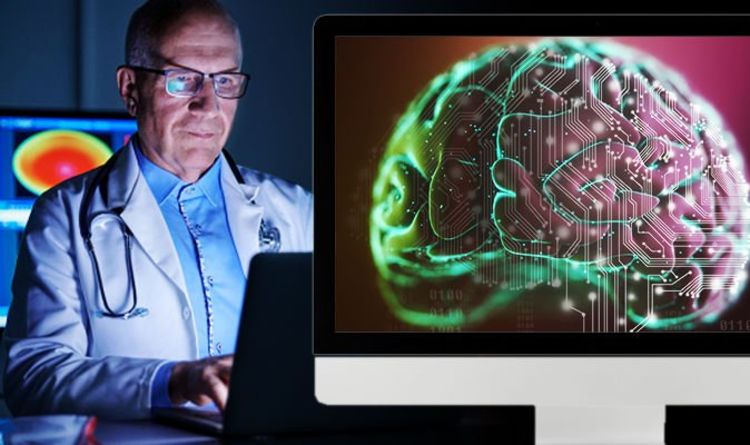 That is, for some purposes, you do not need to make high-quality neural interfaces, but you need to track brain activity. Let's say we are rehabilitating some patient with neurological damage, we need to know how his activity changes depending on the therapy we use, and this is a very useful record.
That is, for some purposes, you do not need to make high-quality neural interfaces, but you need to track brain activity. Let's say we are rehabilitating some patient with neurological damage, we need to know how his activity changes depending on the therapy we use, and this is a very useful record.
M. Astvatsaturyan – Well, for an experimenter-researcher, invasive ones are probably better, right?
M. Lebedev – For a researcher, of course, invasive ones are better, yes. But, on the other hand, if we want to develop some kind of practical system, here we have to think about how many people there are who want to put electrodes inside the brain. And if we create some new methods for neuroinvasive recording that will be needed by hundreds of thousands of people, then maybe this is the way to go.
M. Astvatsaturyan – In the United States, you conducted unique, in many ways pioneering, experiments on monkeys and rats. What are your results, exactly yours - I saw a lot of your publications on PubMed - raised this area to a fundamentally new level.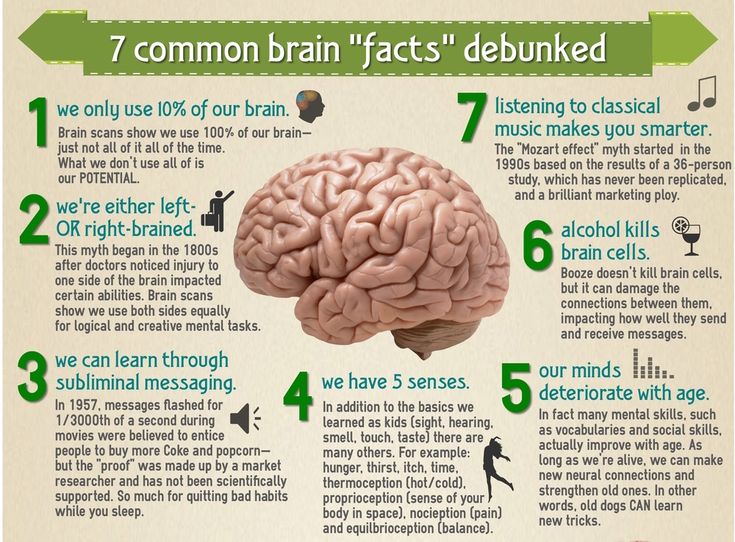 Area, I mean the creation of a neural interface. That's what affected the development of the entire region in the future, if it was?
Area, I mean the creation of a neural interface. That's what affected the development of the entire region in the future, if it was?
M. Lebedev – We really tried to always do pioneer research, that is, not to repeat what had already been done before us, but tried to do something new in this area.
M. Astvatsaturyan – Remind me, was it at Duke University?
M. Lebedev – It was at Duke University. Well, in principle, in other places where I worked, too. Although there was no direct topic about neural interfaces, they always tried to do something new. This is the only way to somehow excel on the scientific front. Our first known demonstration was when we demonstrated a neural interface that controlled such typical primate - and for humans and for many animals - movements, like reaching and grabbing. That is, to reach out part of the movement, the second - to grab.
M. Astvatsaturyan – By the power of thought, so that this desire arises somehow.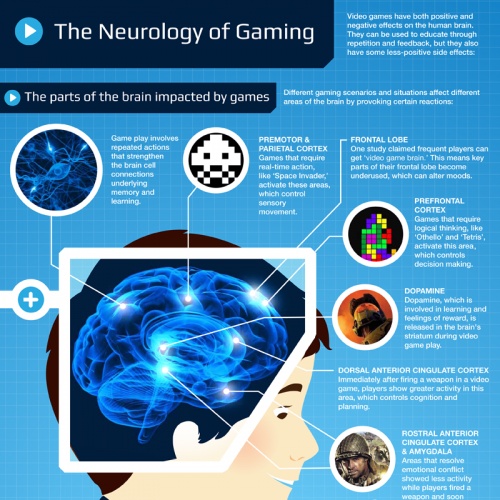
M. Lebedev – Yes, well, it was done by the power of thought, in the sense that the activity in the motor cortex was recorded, and the action was carried out by a robot. It was a fairly well-known work. Then we wondered if we could feel this movement. What is meant here? That we control a hand that reaches out, touches some objects, but what good is it to us if it is insensitive? But if she touches the object and can feel, then ...
M. Astvatsaturyan – How do you know? If it's hot, she snaps, right?
M. Lebedev – So, we put sensors on this mechanical hand, and they feel the properties of these objects. That is, some form, texture, temperature, and so on.
M. Astvatsaturyan – How do you know about it, how did they feel?
M. Lebedev – The sensors on the robot’s hand can feel a lot. By the way, this is a separate topic to cover the robot with such skin that feels both temperature and touch, and so on.
M.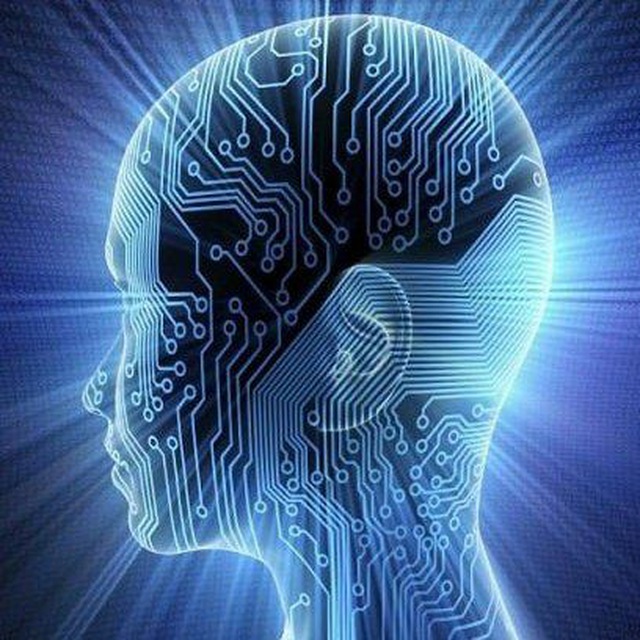 Astvatsaturyan – I wanted to talk about all these bionic matters too, but a little later.
Astvatsaturyan – I wanted to talk about all these bionic matters too, but a little later.
M. Lebedev – Good, good.
M. Astvatsaturyan – Let’s go back to your monkeys, yes.
M. Lebedev – This was our second demonstration, where we demonstrated such a “brain-machine-brain” interface that not only controlled a virtual hand, but this virtual hand also sent signals back, telling how it feels. That is, she sent such artificial tactile sensations. Then we moved a little on such an interface, which is for bimanual tasks. That is, in fact, although the experimenter is very fond of tasks where only one hand is involved, or only one finger, in fact we do everything with two hands, and with one hand we do it very sharply. And we made an interface where the monkey controlled two virtual hands, each moving towards its goal. And we have shown that it is really possible to achieve through the neural interface that it controls both hands independently.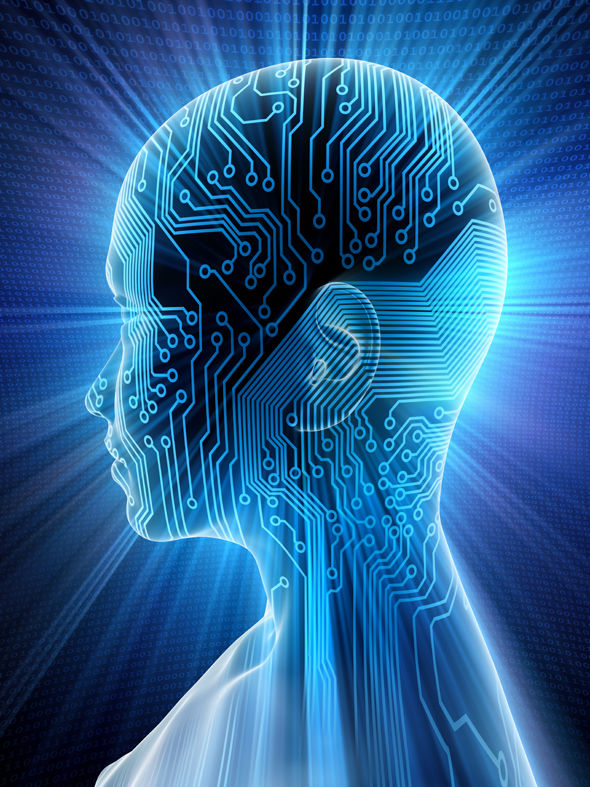 That is, the hands did not move in such a pathological way, let's say two hands in one direction, since there are such pathologies, but really independently. Well, there was also an interesting point that in order to achieve this independence, it was not necessary to record in different places of the brain, we recorded from the same neurons. This ensemble of neurons provided independent control. Then we said: well, we have done enough work with the hands, let's work with the legs. And we made such an interface where the monkey walked on the treadmill, and we decoded the walking. That is, we recorded the activity of the brain, and decoded the stepping movements so that just by looking at how the brain neurons were firing, we could tell what kind of stepping movements the monkey was doing. But this was not enough, it was necessary to demonstrate why it was needed at all. We connected our monkey, which was in America, to a robot, to such a humanoid, which was in Japan, and he walks to the beat of the monkey.
That is, the hands did not move in such a pathological way, let's say two hands in one direction, since there are such pathologies, but really independently. Well, there was also an interesting point that in order to achieve this independence, it was not necessary to record in different places of the brain, we recorded from the same neurons. This ensemble of neurons provided independent control. Then we said: well, we have done enough work with the hands, let's work with the legs. And we made such an interface where the monkey walked on the treadmill, and we decoded the walking. That is, we recorded the activity of the brain, and decoded the stepping movements so that just by looking at how the brain neurons were firing, we could tell what kind of stepping movements the monkey was doing. But this was not enough, it was necessary to demonstrate why it was needed at all. We connected our monkey, which was in America, to a robot, to such a humanoid, which was in Japan, and he walks to the beat of the monkey.
And there was even such a demonstration where we stopped the treadmill, and the monkey had an image of a robot in front of him on the screen, he continued it, as if standing, to control, as it were, a robot.
M. Astvatsaturyan – To build (laughter).
M. Lebedev – Yes, yes, build this robot (laughter). And it further follows that, generally speaking, a person with paralyzed legs could control an exoskeleton that is attached to the legs. And we did such demonstrations, it was in Brazilian studies, and also at the Higher School of Economics we worked with a team, also with Alexei Osadchiy, at the Higher School of Economics. And there we showed that due to the electroencephalogram, the stepping movements of the robot can be triggered, which, generally speaking, is necessary for paralyzed people, since they need to make such Hebbian plasticity. The exoskeleton takes a step, a discharge of receptors occurs, and it rushes to the head can through some of the remaining fibers after the spinal cord injury, and there the synchronous activity of the brain connects, and this sensory influx, due to this, the healing will begin.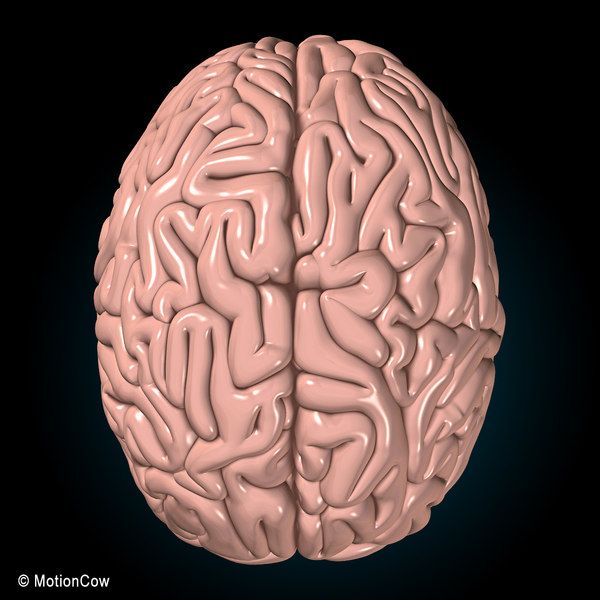
M. Astvatsaturyan – Well, that is, these are the very artificial sensations… neurorehabilitation.
M. Astvatsaturyan – But since we are talking about life, I had this question… You know, there was a wonderful physiologist Ivan Nikolaevich Pigarev, who recently died tragically, he worked with cats. They ran around his laboratory with such structures on their heads, with electrodes. He loved them very much, and he spoke of them as full-fledged employees. “Cats that work in our laboratory,” said Ivan Nikolaevich. What kind of relationship does the researcher have with monkeys? So, let's say you went on vacation for a month, right? From Duke University, for example.
M. Lebedev – Yes.
M. Astvatsaturyan – So you returned, how are these relations? After all, monkeys are highly developed creatures. Were they bored, were they offended, or did they not care? Or they just came to work, like your colleagues, and in general they don’t care how you rested.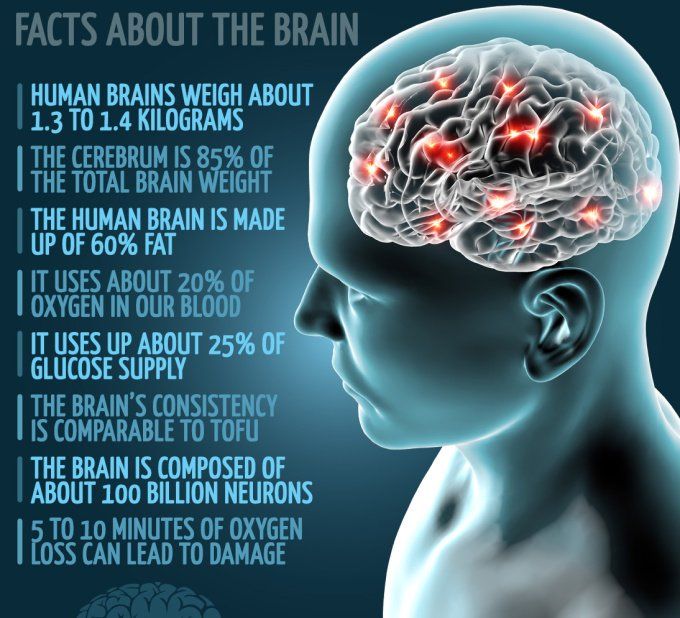
M. Lebedev – Each researcher has a different relationship with monkeys. That is, here I observed a wide range, up to the point that, indeed, the researcher begins to be friends with his monkey ...
M. Astvatsaturyan – Well, monkeys are probably different too, right?
M. Lebedev – They develop a trusting relationship. Monkeys are also completely different personalities. And there are scientists who don't even look at the monkey when they write it down. Here he needs to look at the oscilloscope, where are the discharges of neurons, this interests him. So there is no certainty here.
M. Astvatsaturyan – How are you?
M. Lebedev – I'm probably somewhere between these two sides.
M. Astvatsaturyan – That is, sitting in Skolkovo, you don’t miss them. Well, that's the main question. Well, I won’t say anything to the monkeys (laughter)
M. Lebedev – Well, I had so many monkeys, so I’m already…
M.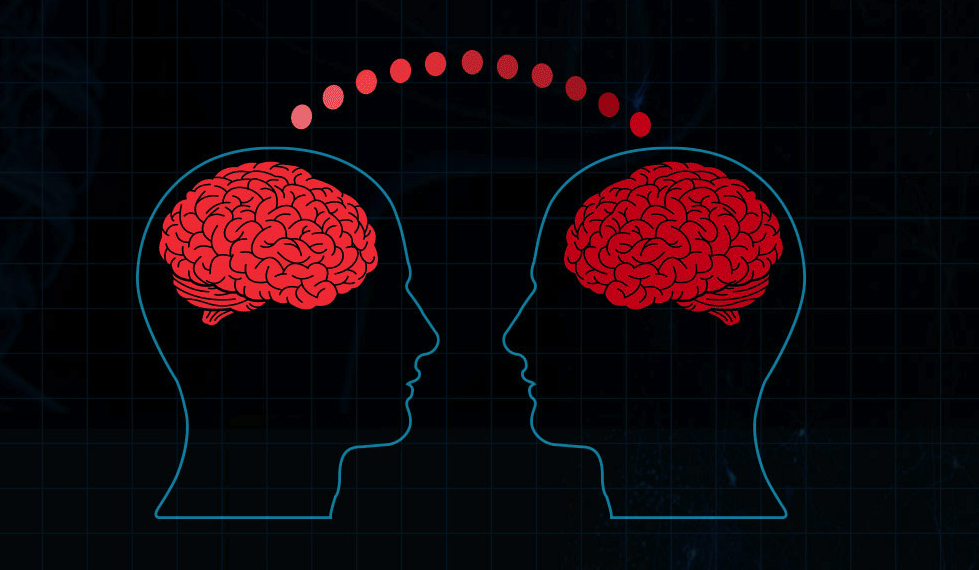 Astvatsaturyan – Oh, of course, you can’t remember all of them.
Astvatsaturyan – Oh, of course, you can’t remember all of them.
M. Lebedev – You can’t remember everyone, yes.
M. Astvatsaturyan – Good for you. I would also like to ask you, concluding this part, we have a few minutes to talk about the direction of your work at the Skoltech Center for Neurobiology and Neurorehabilitation. He is young enough, this Center, right? Since 2018. But, on the other hand, already established. Judging by the name and what I saw on the site, it is a medical focus. And judging by the partners: you have the Burdenko Clinic as partners there, the Center for Neurology. What will be there, what is being done there, will be done there?
M. Lebedev – Yes, the main direction is always medical, because, of course, we want to engage in pure science, but this somehow needs to be substantiated, and really bring practical benefits. And in neuroscience, we can really bring practical benefits to people. People are living longer, and neurological diseases are becoming more and more common.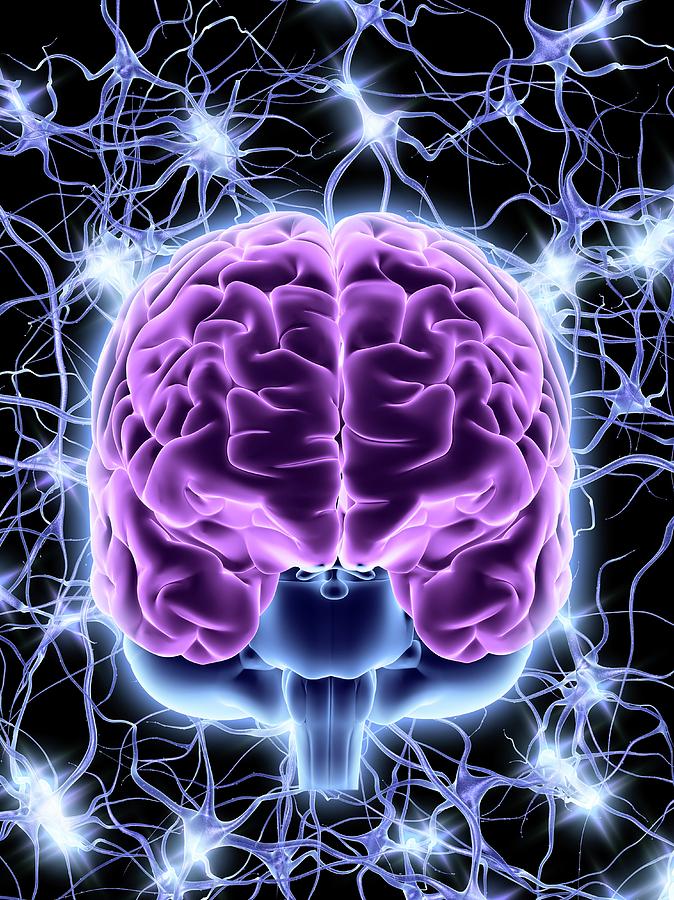
M. Astvatsaturyan – Well, yes, with the aging of the population, of course.
M. Lebedev – That is, we do not want a person to live long, but at the same time lose some brain functions, so we need to monitor. Monitor the health of the brain, recognize, diagnose some diseases, prevent them. If they happen, we either rehabilitate them, that is, we use our own capabilities of the brain so that the brain repairs itself, or we try to compensate, replace, that is, by some means we try to replenish the lost properties of the brain. But here we need such a multidisciplinary approach, and we are trying to make sure that all areas in our center are represented - from molecules to medicine and brain systems, and plus more mathematics, plus more robotics, so we will attract even more specialists.
M. Astvatsaturyan – Today you have established cooperation with the Burdenko Institute of Neurosurgery and the Center for Neurology. Do you go there to see the sick, or do you consult the sick in some other way, or the doctors who observe these patients? Is this work already in progress?
M.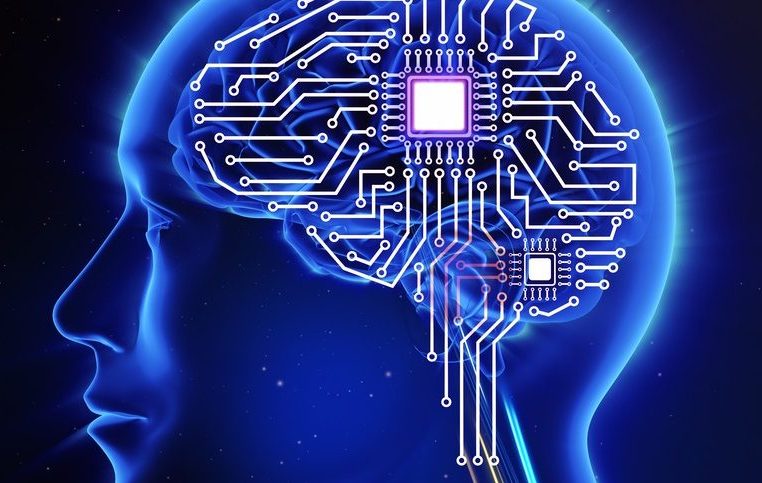 Lebedev – Now what we are doing is we are deploying work in several medical centers, in fact, throughout the country from Vladivostok to St. Petersburg, and Kaliningrad, and Samara, and Kazan, and Moscow. And we are working on such a simulator for people who have suffered a stroke or spinal cord injury. In short, we take an electroencephalogram in a non-invasive way, translate it into motor commands, that is, the desire to make a movement, and at the same time, since these are people who are paralyzed, such a specially designed robot moves their hand and directs it to the target, and to this we also add additional means such as spinal cord stimulation, because spinal cord stimulation is known to be powerful.
Lebedev – Now what we are doing is we are deploying work in several medical centers, in fact, throughout the country from Vladivostok to St. Petersburg, and Kaliningrad, and Samara, and Kazan, and Moscow. And we are working on such a simulator for people who have suffered a stroke or spinal cord injury. In short, we take an electroencephalogram in a non-invasive way, translate it into motor commands, that is, the desire to make a movement, and at the same time, since these are people who are paralyzed, such a specially designed robot moves their hand and directs it to the target, and to this we also add additional means such as spinal cord stimulation, because spinal cord stimulation is known to be powerful.
M. Astvatsaturyan – The engine of activity, yes.
M. Lebedev – Yes, to modulate motor activity, and direct these plastic mechanisms of the brain in the right direction so that the brain corrects itself after such injuries.
M. Astvatsaturyan – You don’t encounter the conservatism of clinicians, do doctors willingly agree to this cooperation?
M.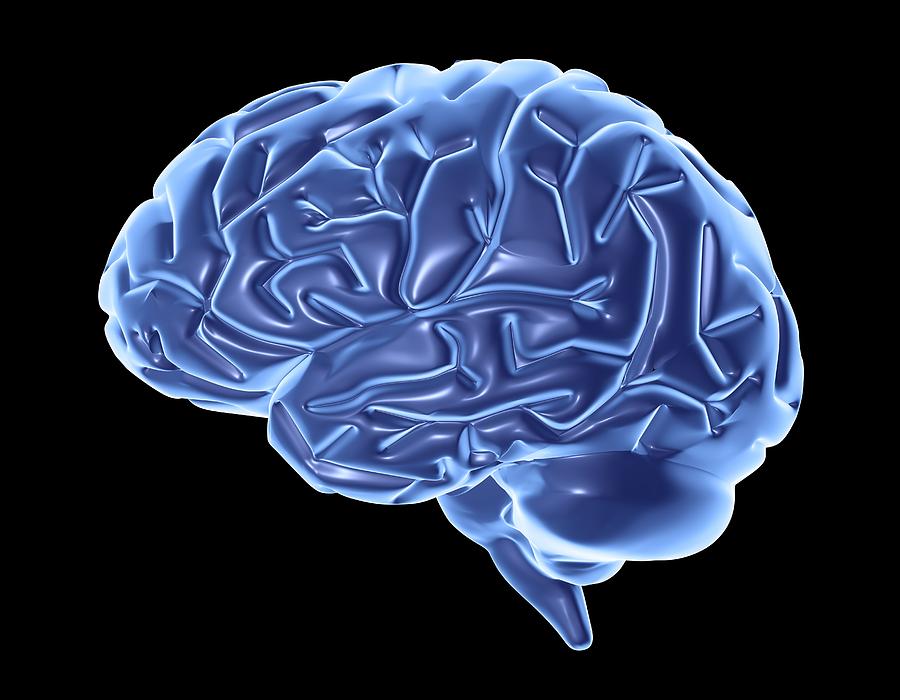 Lebedev – On the contrary, I would say that we are faced with a very strong desire to include all these methods. I talked with many doctors, and they say that standard methods of treating patients after a stroke are not enough, let's introduce neurointerfaces, since this is a new direction and they really significantly improve the treatment of such patients.
Lebedev – On the contrary, I would say that we are faced with a very strong desire to include all these methods. I talked with many doctors, and they say that standard methods of treating patients after a stroke are not enough, let's introduce neurointerfaces, since this is a new direction and they really significantly improve the treatment of such patients.
M. Astvatsaturyan – Let me remind you that Mikhail Lebedev, a neurophysiologist, professor at the Skoltech Center for Neurobiology and Neurorehabilitation, was a guest in our Talks for Life series. We will continue our conversation in the next part.
Source: echo.msk.ru
Brain and computer: what do they have in common?
March 14, Children's lecture hall of the Polytechnic University invites children from seven years old to the lecture "How a computer remembers". This is the second lecture in the "How a Computer Works" series, and the third lecture will be held on Saturday, March 21, and will be devoted to how a computer thinks.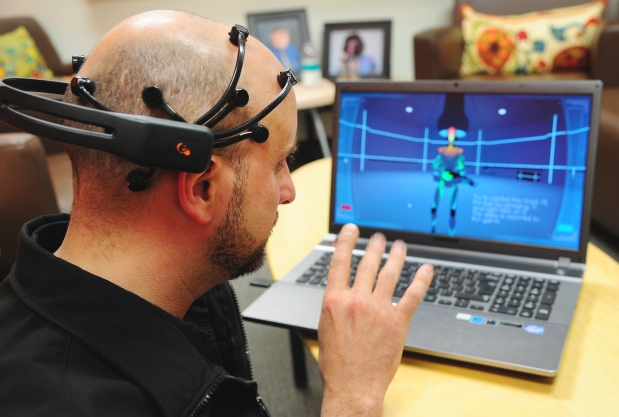
People have always drawn parallels between the mechanisms of the brain and various inventions. The ancients, for example, believed that the brain was like a water clock. The brain-computer connection has become commonplace lately, but are they really similar?
1. Both the brain and the computer need energy. The brain needs nutrients like glucose, the computer needs electricity. Both use signals to send messages: the brain uses chemicals to do this, the computer uses electricity. The speed of signal transmission in a computer is much faster than in the human brain.
2. Both transmit and process information. The computer uses binary code for this. Any command that is processed by the computer's processor is encoded with its help. The transmission of information through the nerve cells, or neurons, of the brain is arranged differently: each neuron constantly receives information from other cells through synaptic contacts.
3.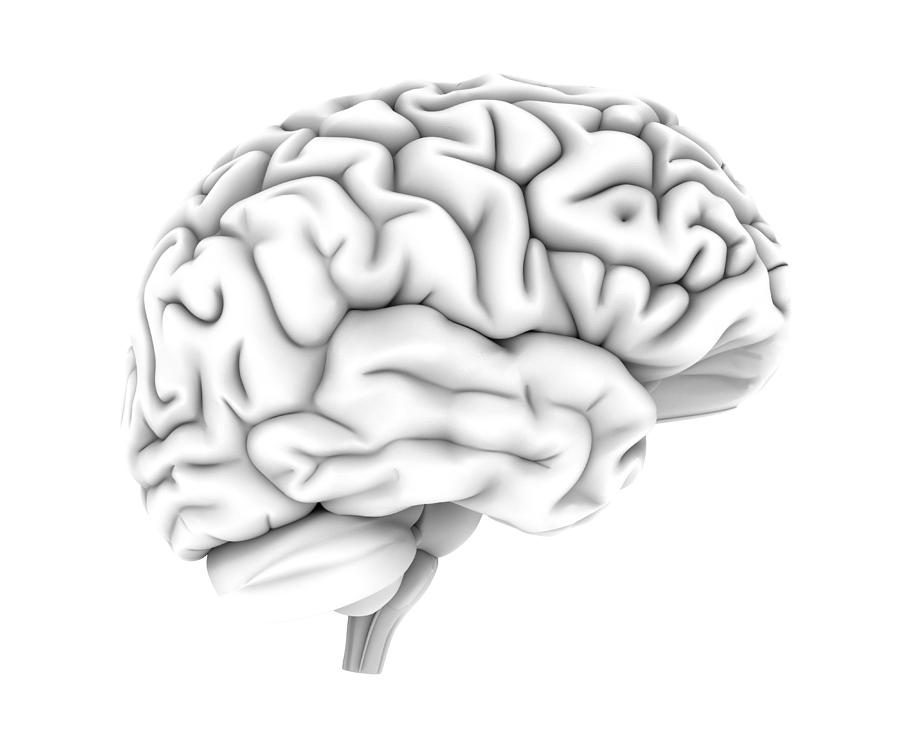 Both have memory. Computer memory is built up with chips. And it is very difficult for a person to forget something on purpose.
Both have memory. Computer memory is built up with chips. And it is very difficult for a person to forget something on purpose.
4. Both the computer and the brain are capable of learning. Today, the brain does this much better, but the computer is better at multitasking. For example, it is very difficult to read Eugene Onegin aloud and multiply even prime numbers at the same time. The speed of the processor in a computer is such that it can perform several tasks almost simultaneously. The brain does something similar, using the autonomic system, which controls breathing, heart rate and blood pressure. And yet the brain is still capable of thinking. Both the computer and the brain can solve logical problems. The computer does this faster and better, but it is completely devoid of the most important human property, so necessary for scientific discoveries - imagination.
5. Both are susceptible to damage, for example, both the computer and the brain of can become infected with a virus.